GOF ERAS “Ships of the Month/Quarter”
SHIP OF THE MONTH: The Dutch Klein Fregat 09 June 2016
So I had yet to feature any Dutch ships in our ship of the month column. With my research and resulting historical article on the Tyger vs the Shackerloo and also inspiration coming from my test game where I am currently operating with a similar ship (the old Remus77 converted POTBS Postillionen) I decided upon featuring the small fast privateering “Klein Fregat” built by the Dutch and Flemings throughout the 17th century.
If you are interested in these types of ships be sure to go to my FLICKR photo album of them where I also write a short narrative historical description of these ships as well. HERE
If you would like to see a selection of all my albums click HERE
So here now are the screenshots of her below. I love how agile and quick she is. I sincerely wish we could get some version modeled that actually look like the paintings I illustrate in the Shackerloo vs Tyger story. I would die and enter heaven to get the one in Arnold de Lange’s painting modeled. LINK MK
SHIP OF THE MONTH: The Spanish(Portuguese) Carrack of War “Carracca de Guerra” 10 November 2015
So as part of the new mod release I imported the old POTC carrack with the ram and dragon. I have been criticized by some for keeping these old ships but after my reskins they look completely different. I personally think they look awesome and the ships I picked I have both a soft spot for and I believe they fill a necessary space in our GOF ERAS 2 Golden Age game world. I am especially happy with how these turned out. I am not going to give a history on this ship as I usually do. I have written a lot about these types of ships already. My interface description in the game is especially long. NOTE: For those who wonder why the descriptions are cut off be sure to right click on the large interface picture of the ships in the game to read the full historical descriptions.
If you are interested in these types of ships be sure to go to my FLICKR photo album of them where I also write a narrative historical description of the Carrack. HERE
If you would like to see a selection of all my albums click HERE
So here now are the screenshots of her below. I love how brutal and warlike she looks. These ships look terrible in POTC and New Horizons. In fact my largest criticism of that game is in how visually terrible it is. What a difference of how this awesome ships looks to her sad, poor POTC equivalent. If the PA! guys were by some miracle to ever forgive me for all my horrible offenses to them, how they would benefit from my sharing of new textures with them. So how do like her? I love her! Hope you like her too. MK
SHIP OF THE WEEK: The Blackwall Indiaman 10 October 2015
I decided to rework one of the old POTC ships that we had coded out of COAS. I felt like the English were missing out on a couple of ships compared to the Dutch and Spanish which have a full suit of developed ships in all classes now. I not only added a new 38 gun 4th rater, but also a larger trading ship as well. We already have the “OLD English Bark” but she is aging and not encountered a lot of the time. So I decided I would rework the old Fearless into a English East/West Indiaman. I have been studying the practices in English dockyards of late and found that Chatham never laid down merchant ships – and Deptford only rarely – So that led me to study the history of the Blackwall shipyards – which became the English East India company (EIC) dockyards. Not only did they produce tons of excellent trading ships for the Company and for civilian commercial use – they also built warships when the demand was high – and they built some nice ones. In tribute to Blackwall and the Indiaman, here is my idea of a large English trading ship during the late Golden Age. I based her on the Isaac Sailmaker painting entitled “Two views of an East Indiaman”. Take a look and compare. How do you think I did? Hope you like her. MK
SHIP OF THE WEEK: The Bristol Merchantman or “Guineaman” 24 February 2015
So many people know about the Queen Anne’s Revenge. However many have no idea what kind of ship she actually was. In addition, Disney has not helped matters with its absolutely ridiculous ship they call the QAR produced for the last POTC movie. The abortion of a vessel looks more like a Galleon of about 1650 had relations with the haunted house on the old series “The Addams Family” and the Disney QAR was the offspring. Addams Family Series
Sorry, I couldn’t help myself. Just a little joke! HA! HA! HAAAA!
The actual Queen Anne’s Revenge was a Bristol Merchantman or Guineaman. Now a Guineaman was a slave trading ship. Some would say that any type of slave ship could be classified as a Guineaman. However I take issue with that. As merchant ships became more specialized towards the end of the 17th century into the 18th, ships like Bristol Merchantmen were built to fill the purpose of not only maximizing efficiency in carrying on the “Trangle Trade” routes: Triangular Trade Routes, but were also built to support carrying passengers and colonists back and forth from the new world. With human cargo in mind, typically these ships were only armed with cannons on the upper or “weather deck”. They were usually not pierced below with gunports. A good example of this type of ship resides in the Charleston Maritime Museum. The Anne , which is also our “Model of the Week”. Anne at the Charleston Museum
Indeed we know that “Blackbeard” pierced the Queen Anne’s Revenge for guns on the “Slave deck” or “Passenger deck” below so that she numbered 40 guns taken from prizes when he was finished. We actually know a lot about these kind of ships. Specifically regarding the QAR we know quite a number of details about of her construction.
According to years of research performed by the Queen Anne’s Revenge shipwreck conservation group and the Friends of the Archives of North Carolina, she began life as the Concorde, a 300 ton merchant ship built in Bristol England in 1710. She was captured by the French in 1711 and auctioned off to a rich French merchant operating out of Nantes and was renamed La Concorde de Nantes. She enjoyed a short career as as a privateer armed with 26 guns during Queen Anne’s War (the War of the Spanish Succession) cruizing the West Indies. These were not large guns. Probably only 6 pounders. Not doing as well as her master wanted with little prize money to show for the effort, she began her originally intended purpose as a slave trading Guineaman. It was while engaged in that trade that she was captured by the pirate Captain Benjamin Hornigold on 28 November, 1717. Hornigold then gave her to his trusted pirate Lieutenant Edward Teach a.k.a Blackbeard, who then modified her for pirating and made her his flagship venturing off on his own from Hornigold.
A contemporary witness described the QAR as being a “Dutch-built French Guineaman”. He was most likely mistaken as Dutch practice and style was still widely influencing merchant ships built by every nation of the time (including the English at Bristol). According to the shipwreck conservation’s website, the largest ordinance recovered from the wreck were 6-pounders. So skeptics concerning Blackbeard’s arming her with 40 guns can see that this was actually possible given the modest size of her cannon.
She could have looked like THIS.
So here for you today is MY version of the Bristol Merchantman or “Guineaman” in GOF ERAS2
What do you think of her? MK
SHIP OF THE WEEK
English Second and Third Rate Restoration Era Warships
01 February 2015
This week we showcase English 2nd and 3rd Rate Restoration Era Warships. Why? Two reasons – 1) Because they are some of my very favorite ships – just simply gorgeous. 2) Because I just finished making a new 2nd Rater for the GOF ERAs2 mod and wanted to show her off. She will be found in the next game patch.
I’ve always found English Restoration ships so charming. They have a flair and beauty about them that is unique. They look significantly different than their Dutch counterparts of the time and but no less striking. There were two driving forces behind this wonderful design and style. First was that the King had returned to England – hence – “Restoration”. For the twenty years prior to King Charles II coming home after a long refuge in Holland, England was ruled by the “Lord High Protector” Oliver Cromwell. Cromwell had beheaded King Charles I at the end of the English Civil War and basically took over, making England into a Republic or “Commonwealth”. This may sound good but Cromwell was not much more than a dictator and during that time England was ruled by the Puritans. The theater was closed and people were arrested for swearing. Just like Geneva under Calvinism, neighbors spied on neighbors.
When the King came home after Cromwell’s death and an attempted power transfer to Cromwell’s weak son, the theater was brought back and color too. Under the Puritans it was forbidden for women to wear red publicly and it was frowned upon for men as well. The King wanted to show his prestige and power and even if his coffers couldn’t support his extravagant spending, he spent the money anyway. All manner of beautiful art, architecture, statuary AND MAGNIFICENT WARSHIPS, marked Charles’ reign.
The second factor I spoke about was the Pett dynasty. They were probably the single most poignant factor in the distinctive look and success of English ship design throughout the 17th century. Pett Dynasty Phineas Pett had designed and built the Sovereign of the Seas, one of the greatest English warships of all time. The design of that ship influenced all English ship design thereafter. I also must mention the famous Sameul Pepys as it was his keen knowledge and keeping of the books and administration of the navy that allowed all these wonderful ships to be built, supplied, and crewed. His diaries are one of the most valuable historical records of this time and its happenings existent.
Last I have to add that one of the reasons we know so much about these ships is because of their numerous surviving images in the paintings of the Father and Son artists – the famous William Van de Velde the Elder and Younger. They did more to accurately record ships from this era than most later photo journalists in contemporary/modern subjects.
So here for your approval are my FLICKR sets which include many of the Van de Velde images of these beautiful ships and below are my screenshots of the new English Restoration 2nd Rater for GOF ERAS2.
I am also including the set for HMS Lennox. I tried to find modellers on PA! who were willing to build a 3D version of HMS Lenox, Suffolk or Prince for me that we could use in our games. I offered a thousand dollars but there were no takers. The offer still stands here. Still I don’t think I did a bad job with my version below. What do you think?
Restoration 1st thru 3rd rates
Restoration 4th rates thru unrated warships
HMS Lenox 1670
Restoration Third Rater

New Restoration Second Rater





MK
SHIP OF THE WEEK: 01 January 2015
The ZABRA
Once again relying on Spanish sources rather than English I discovered a neat little ship called a “Zabra”.
Over the course of history in the New World there were quite a few times when the Tierra Firme and New Spain Flotas (Treasure Fleets) would be so horribly damaged by storms or threatened by marauding enemies in the area, that the King of Spain would order the Flotas to stay in place – make repairs and/or wait. When the fleet was very heavily crippled (which happened quite a few times throughout the history of the West Indies) it could sometimes take as much as a year to repair all the ships and get the fleet on its way.
This was not acceptable to the Spanish Crown which relied so heavily on the income from the treasure fleets to pay the Army/Navy and deal with a mountain of debts. So the King would dispatch small fleets of Zabras.
Zabras were of a specifically Catalonian design with a Flemish influence. Often these ships were commissioned to be built by the King himself and constructed by the best Catalonian and Flemish ship builders available in the employ of the Spanish Crown. Zabras were already used as couriers and could make the Atlantic passage in as little as 20 days. This is remarkable when one considers that the treasure fleets took three to four months to make the passage. The Zabra was not only one of the fastest ships in the Spanish Navy, but she was also well armed for her size which averaged around 250 tons (vice the average galleon that weighed between 500 to 1000 tons).
By sending fleets of 3 to 12 Zabras, the King could get a sizeable amount of treasure in his coffers in less than two months time from the moment he gave the order to sail. So I gathered as much information I could find about the Zabra and found that they had the lines of the Flemish/Dutch pinnaces combined with features of the English and Spanish fast galleons.
They were in use from the middle of the 16th century up to the last quarter of the 17th century. So I chose a model that would look most like her 17th century incarnation for GOF ERAs2. I will probably eventually model one based on some woodcuts I found, but for now thought she most resembles the little Pinnace from POTEHO that I morphed and called English Pinnace. So here for your pleasure is my now Spanish version of her called the Zabra. I hope you like her. I made her very fast, distictly Spanish flavored and I think she is a pretty little vessel!
MK
by modernknight1 with no comments yet.
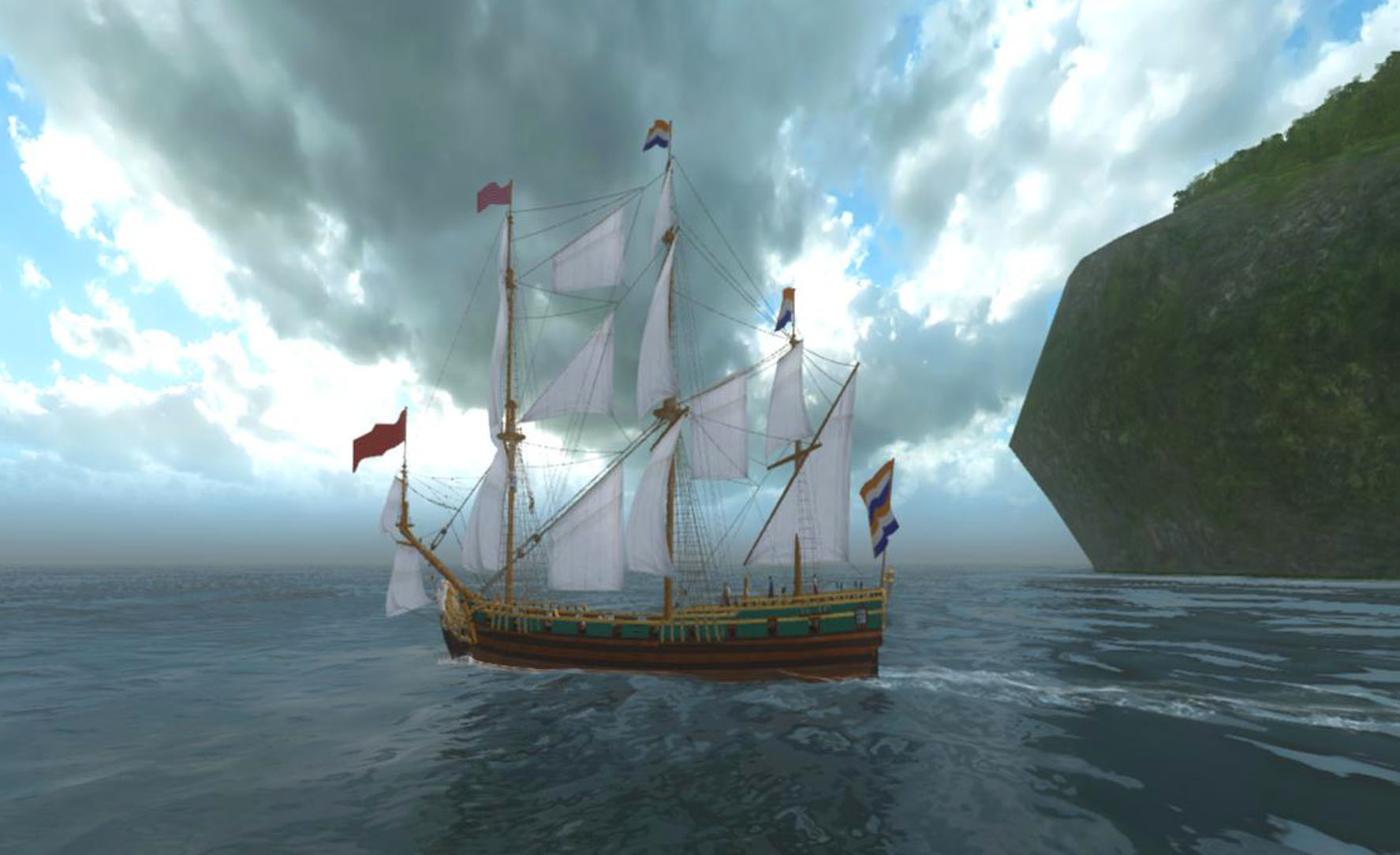
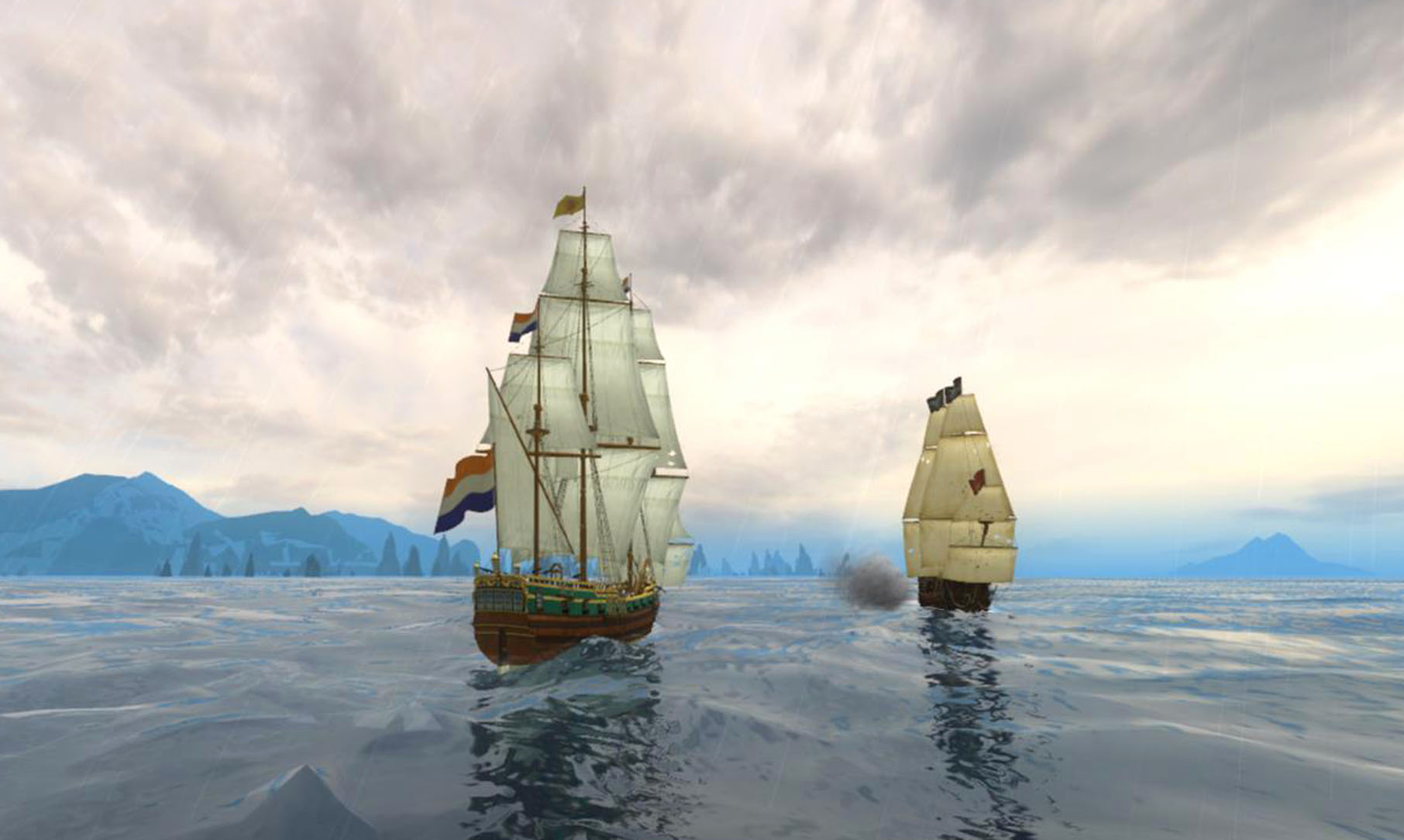
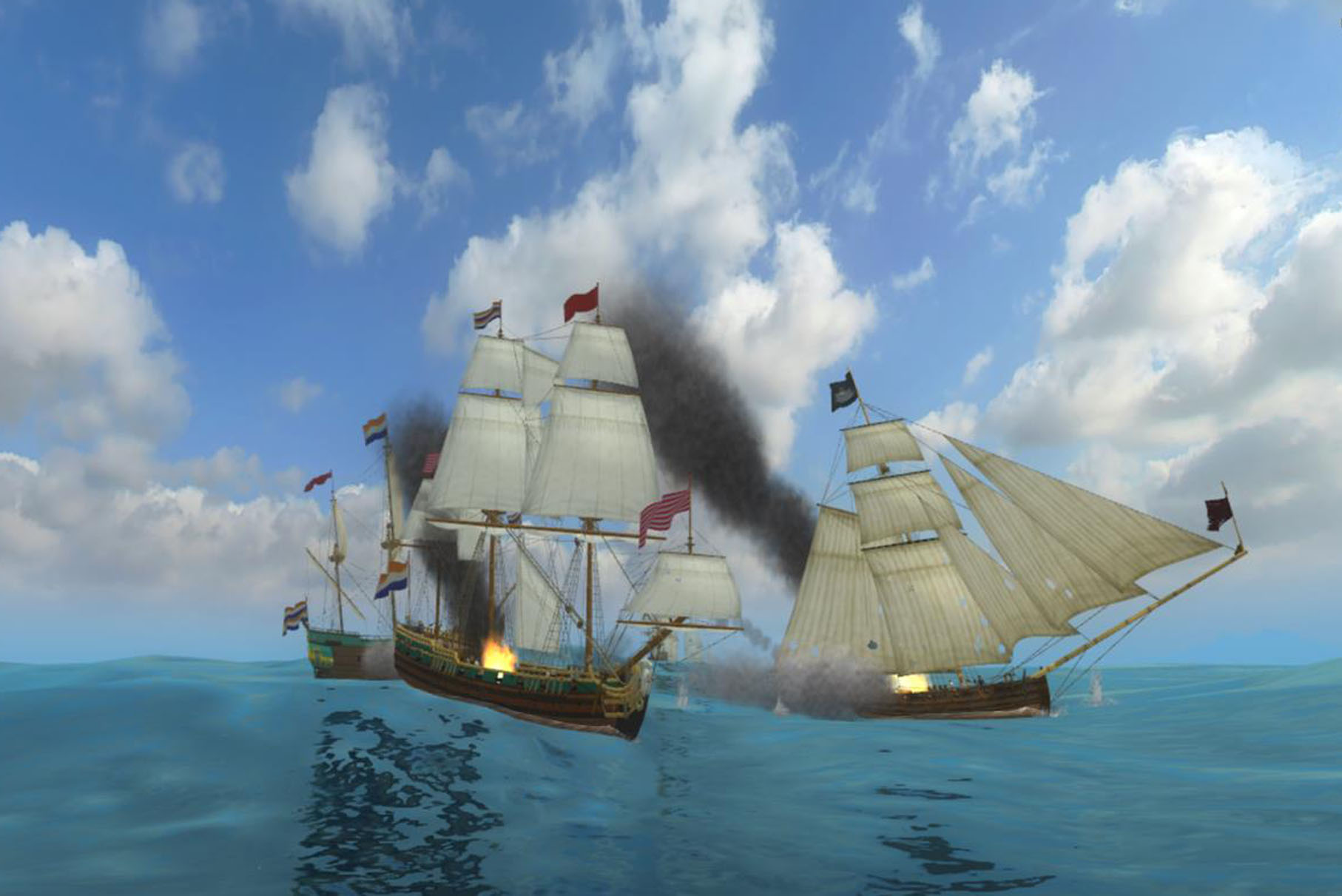
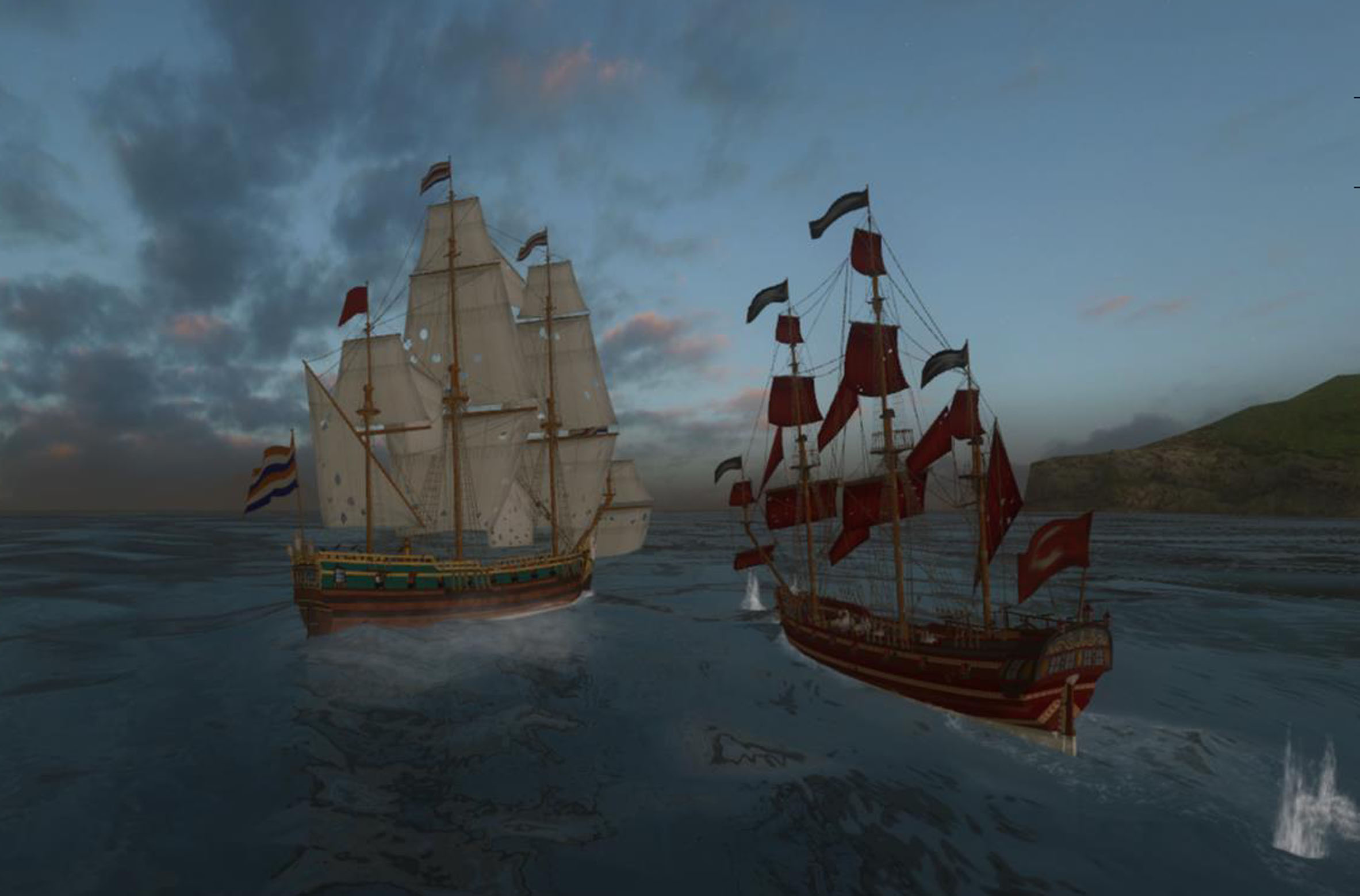







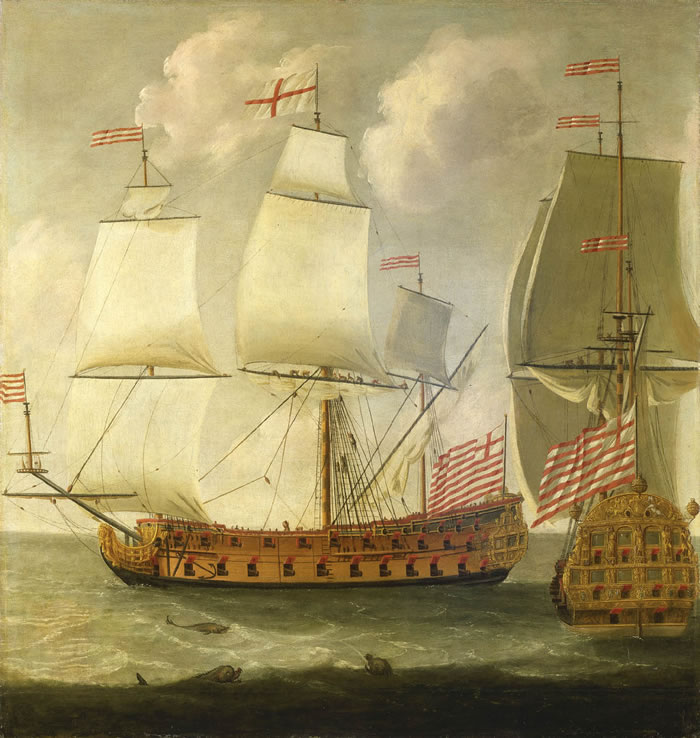
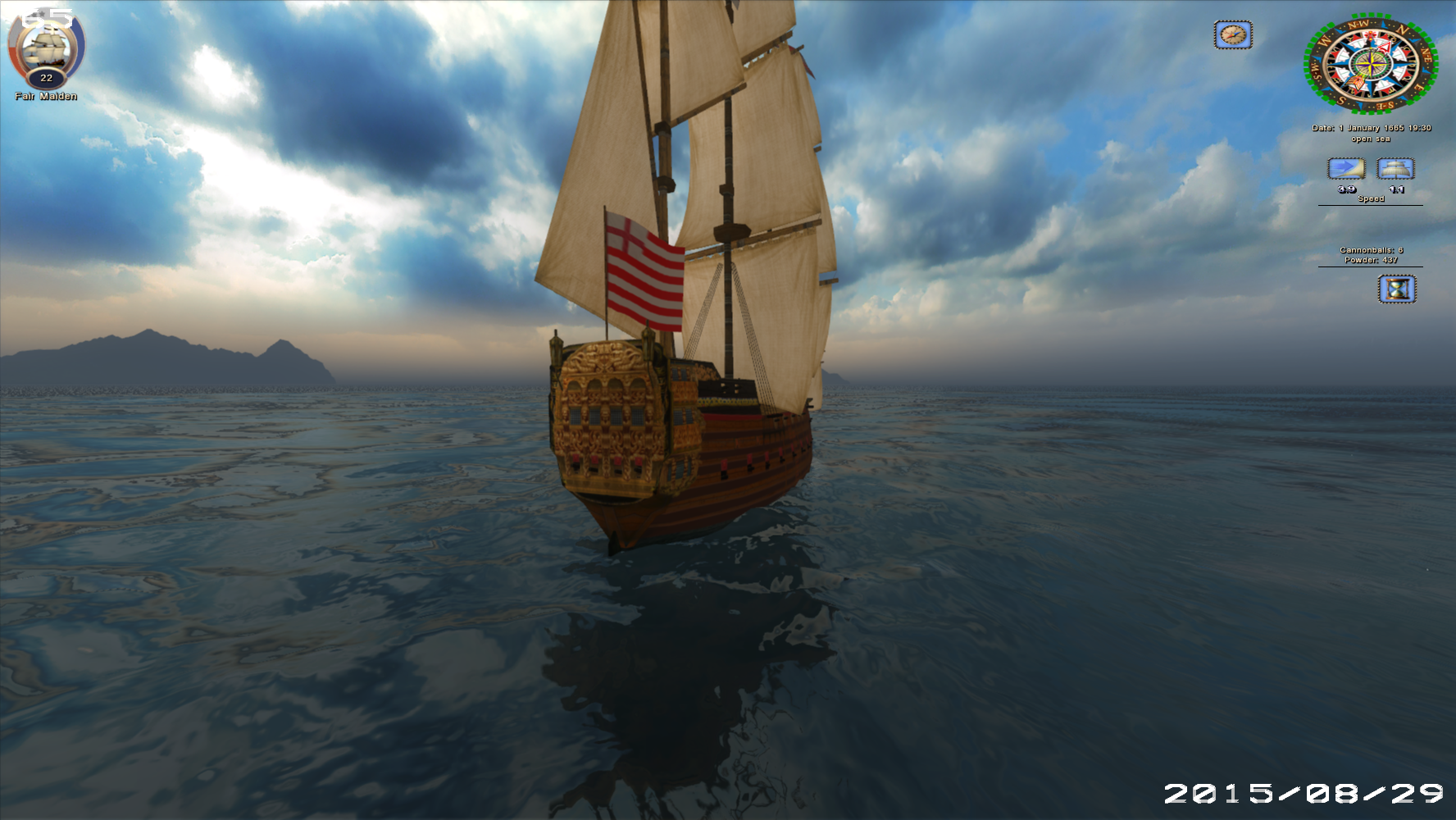
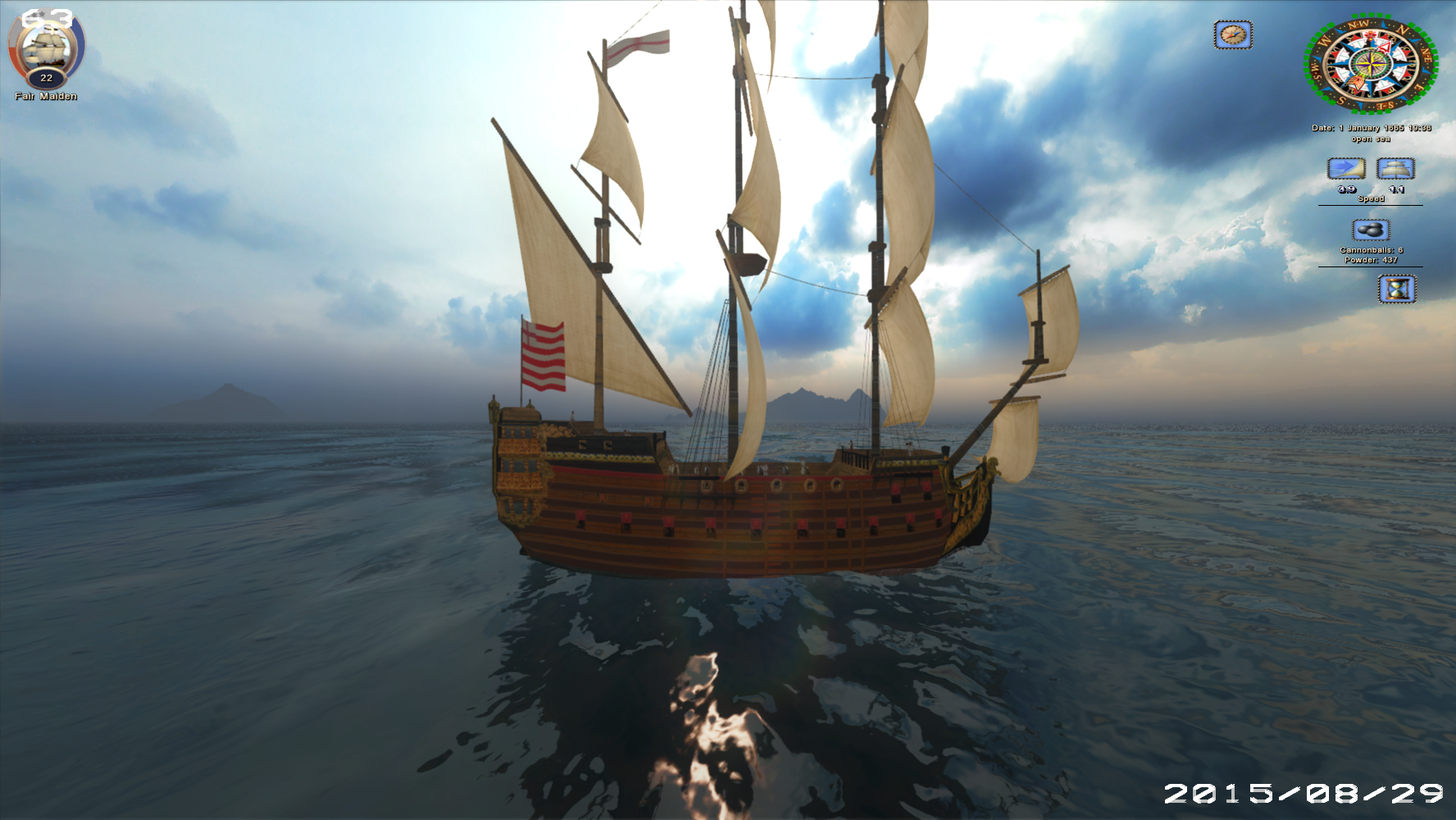
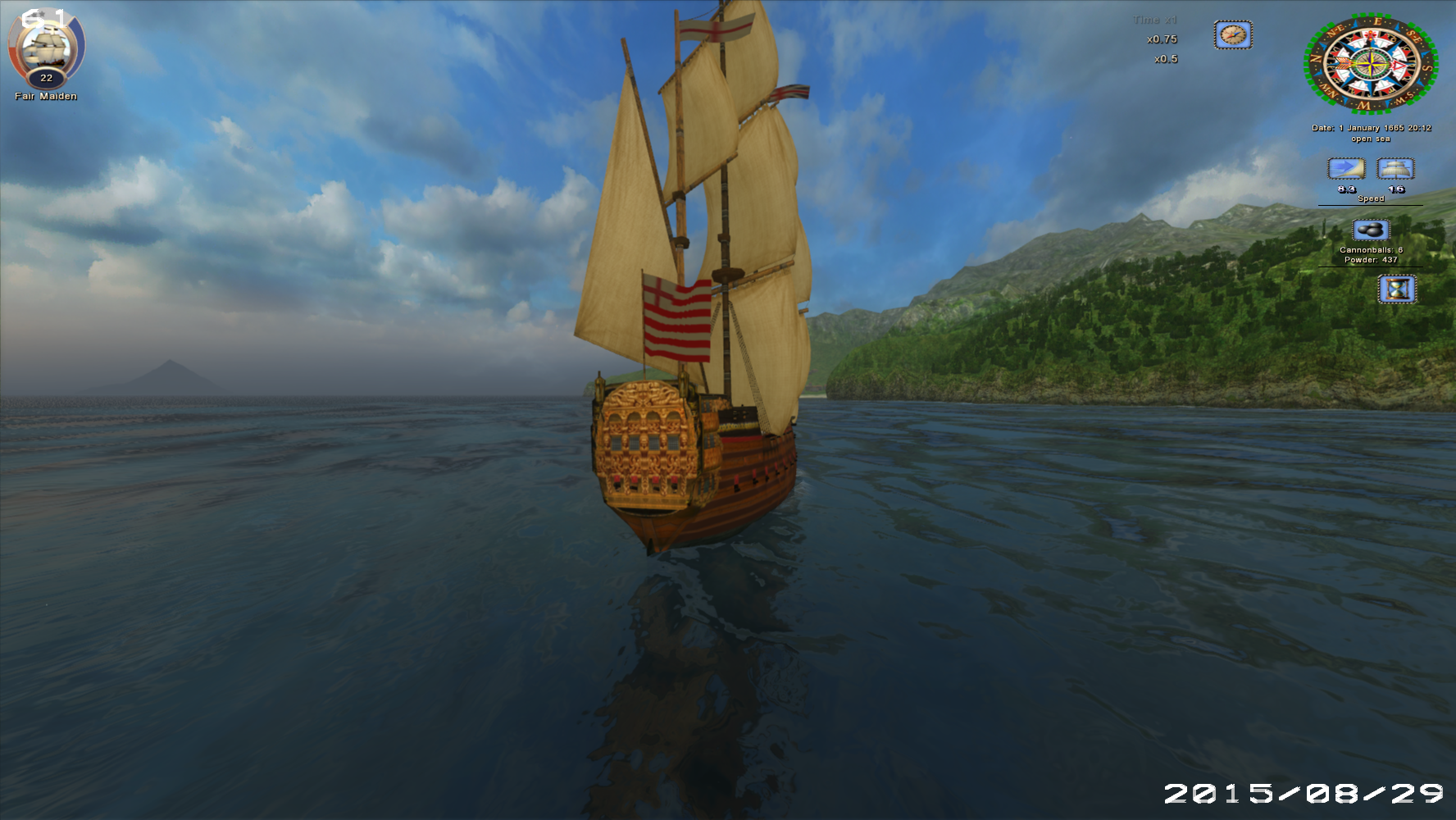
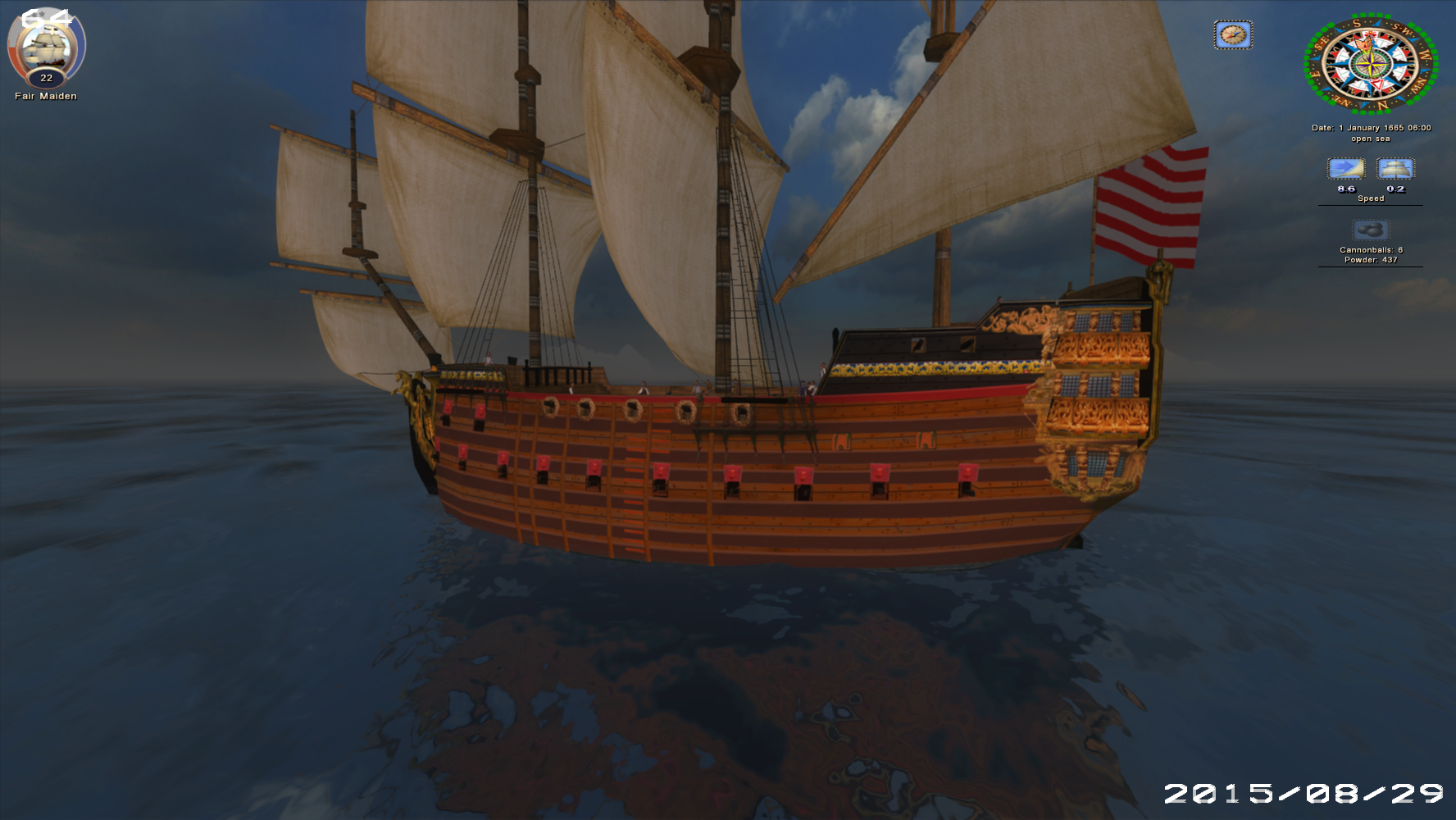
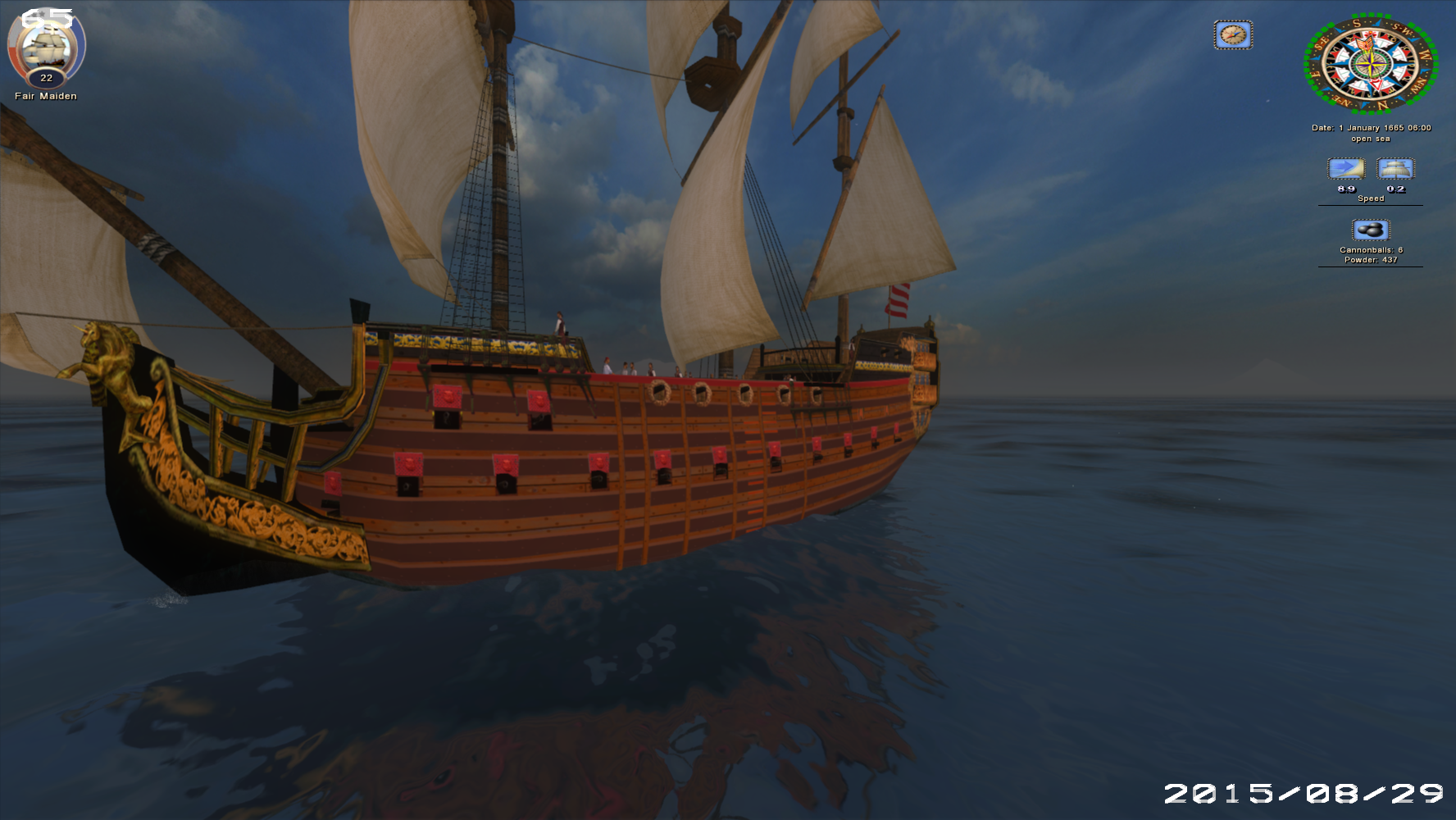
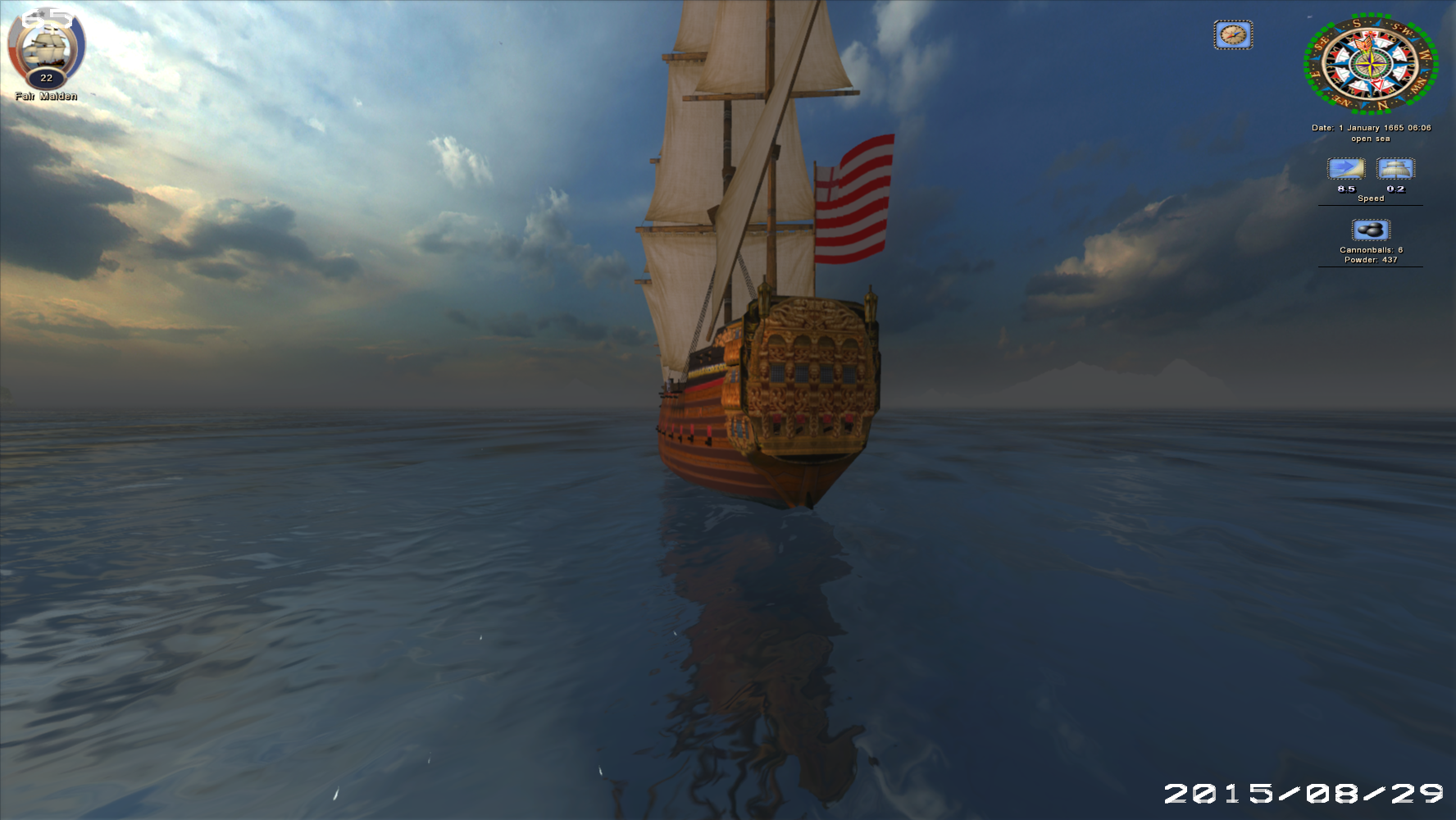
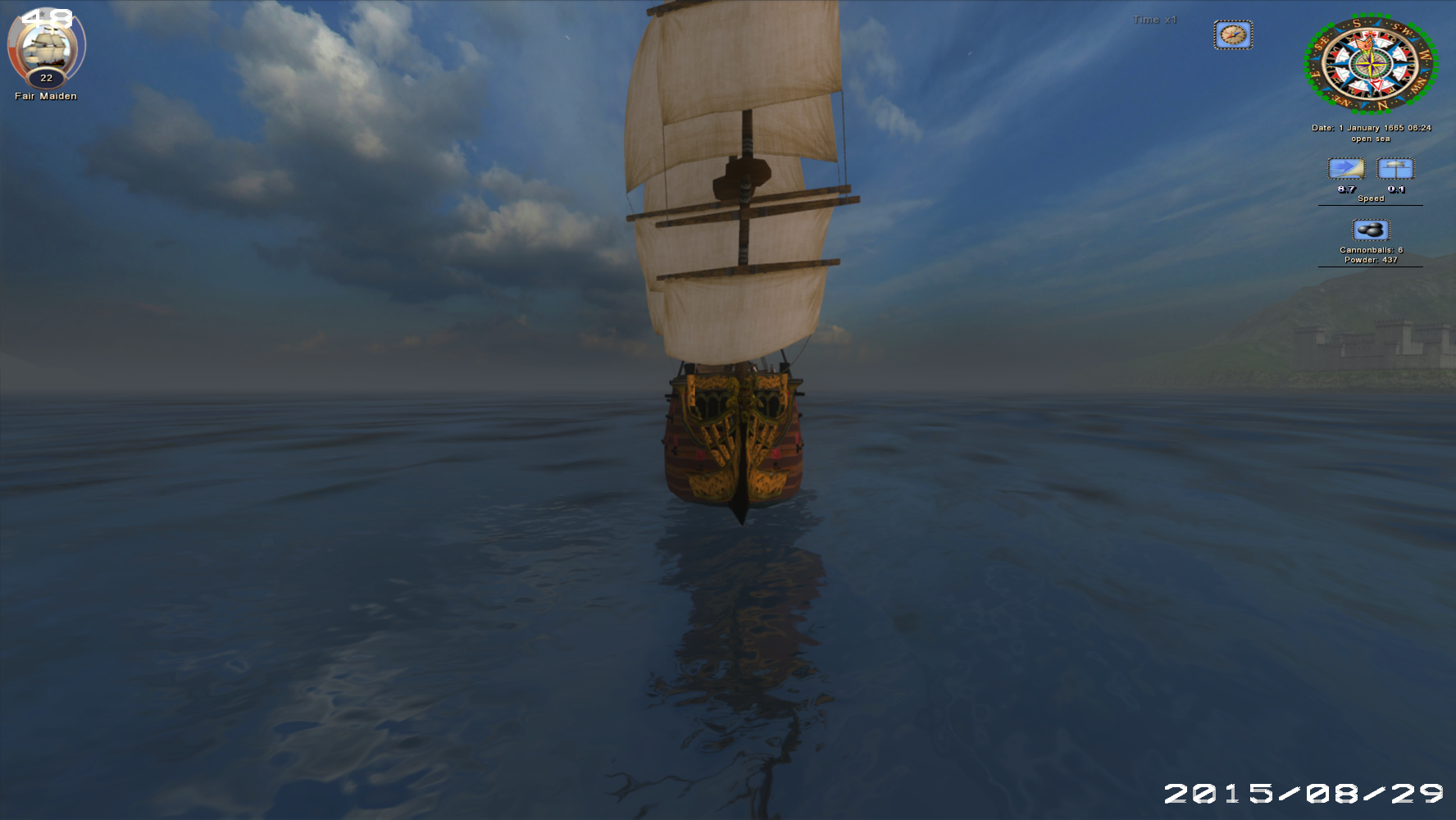
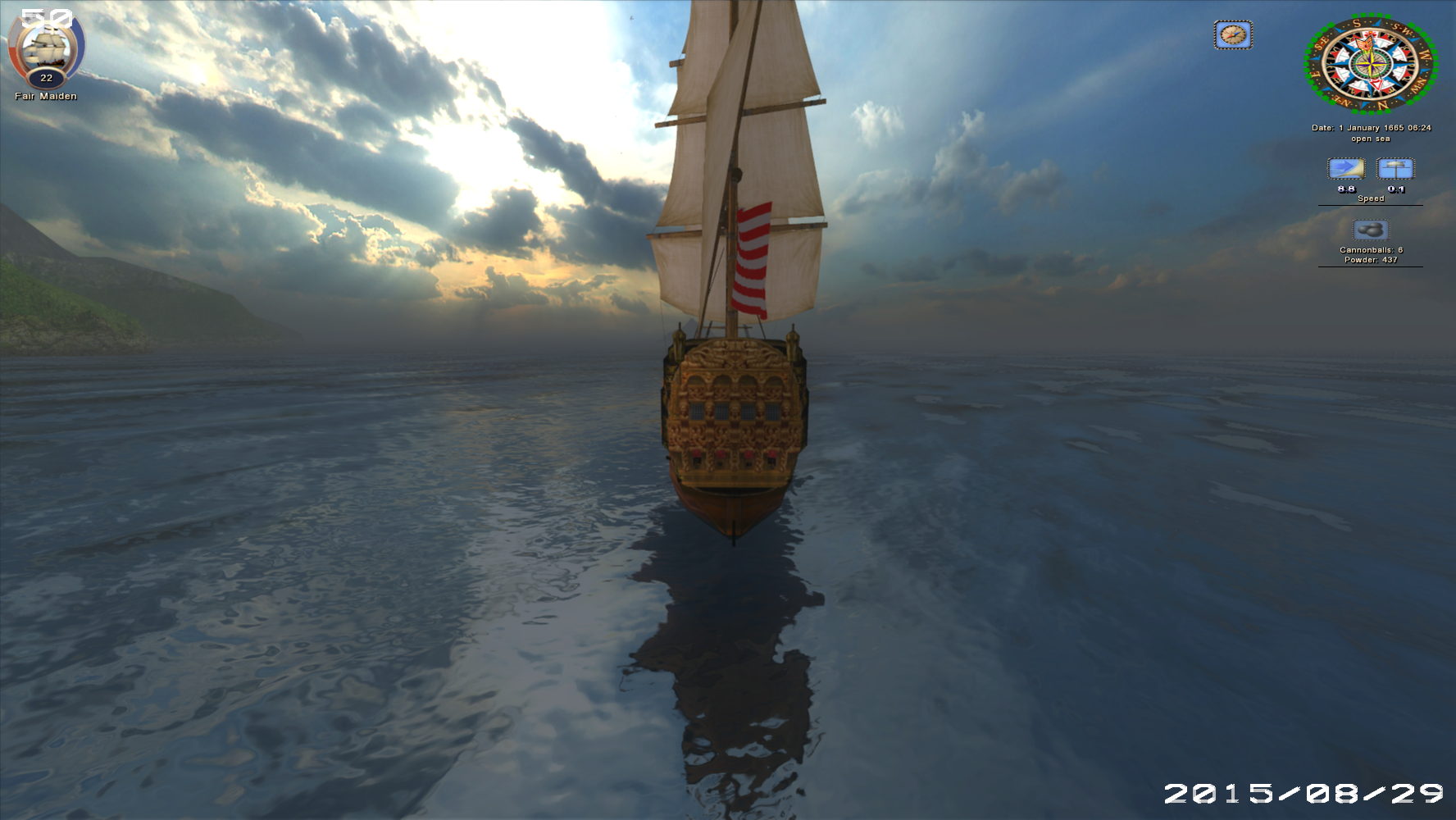
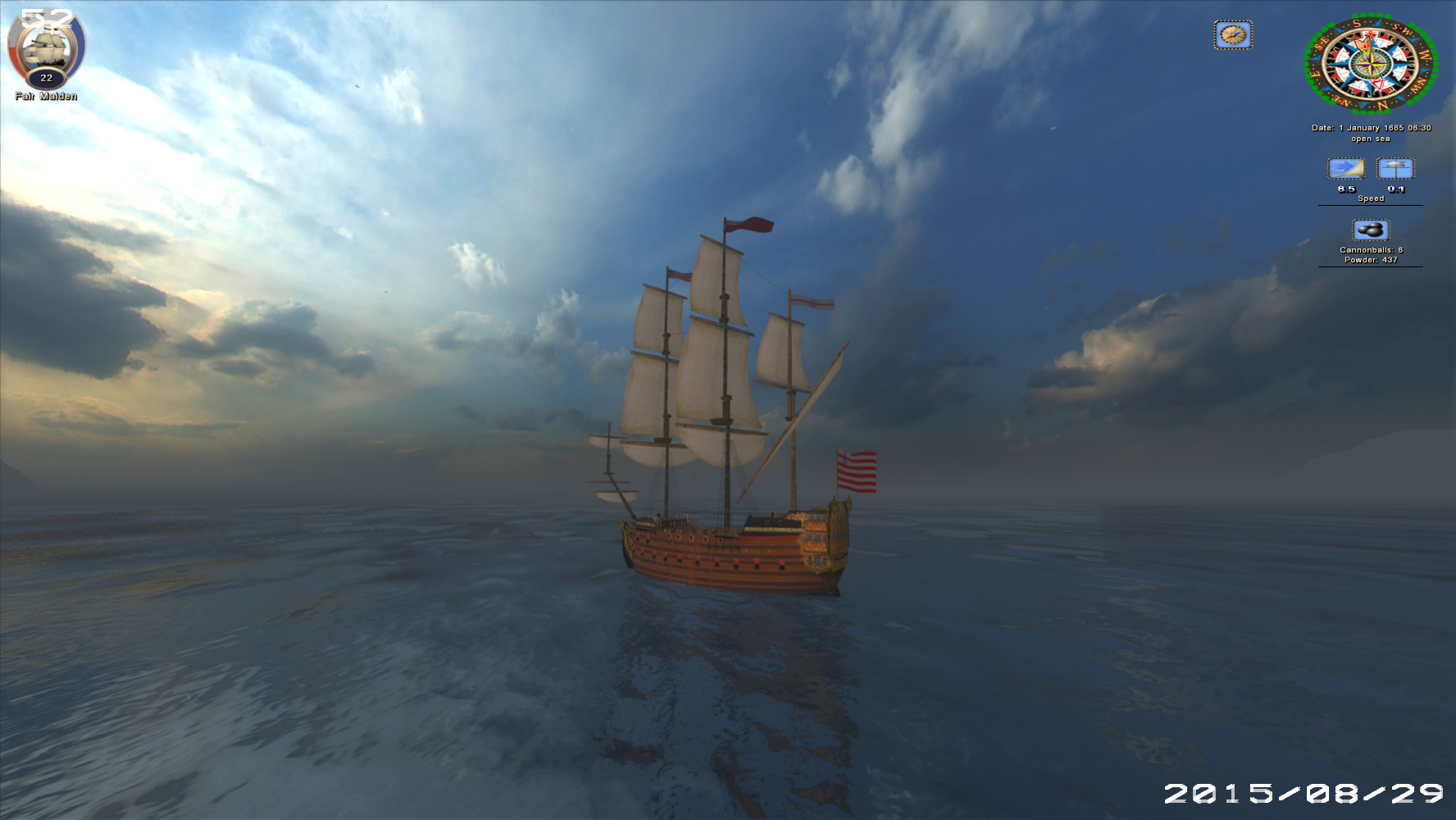
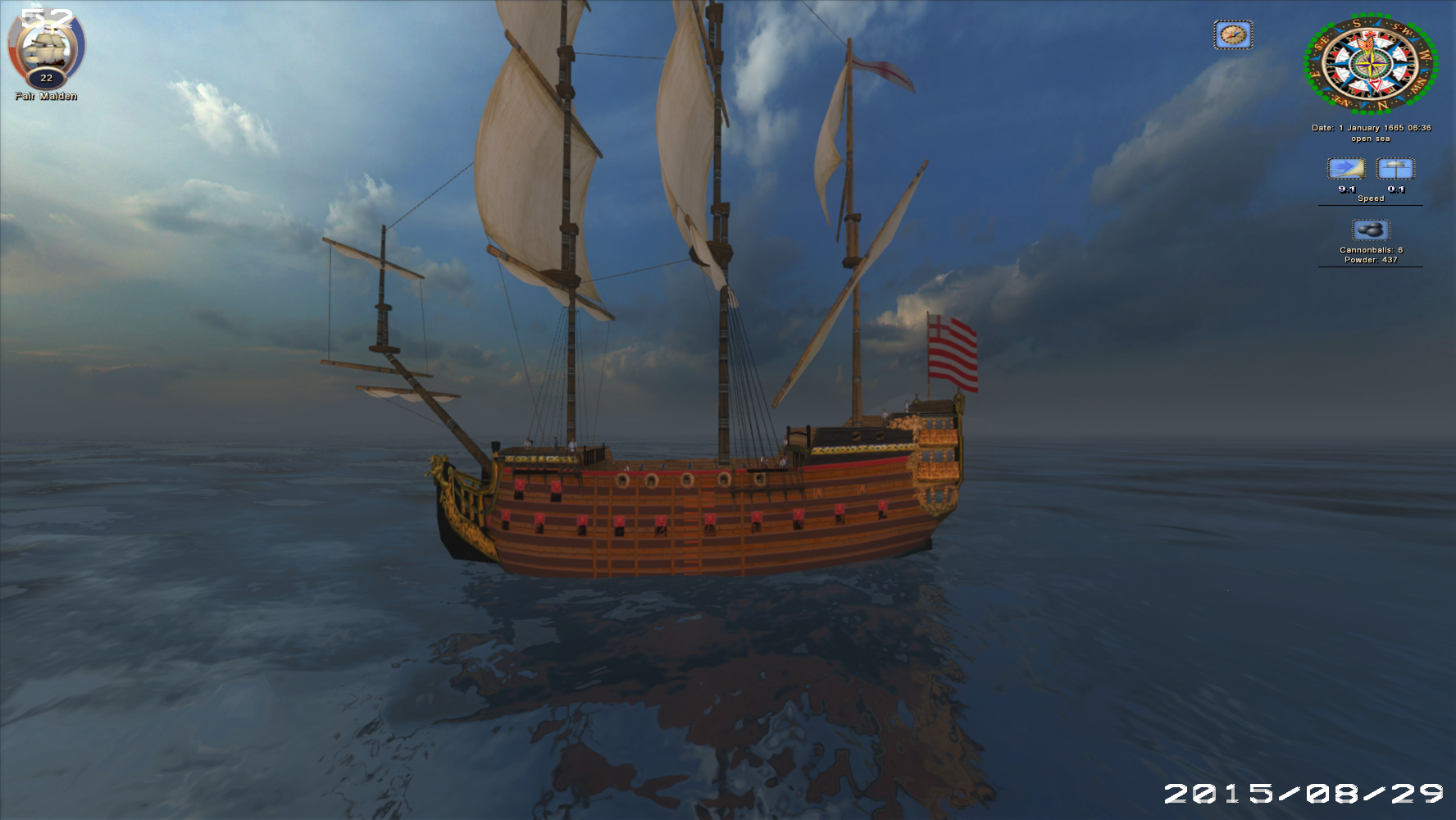
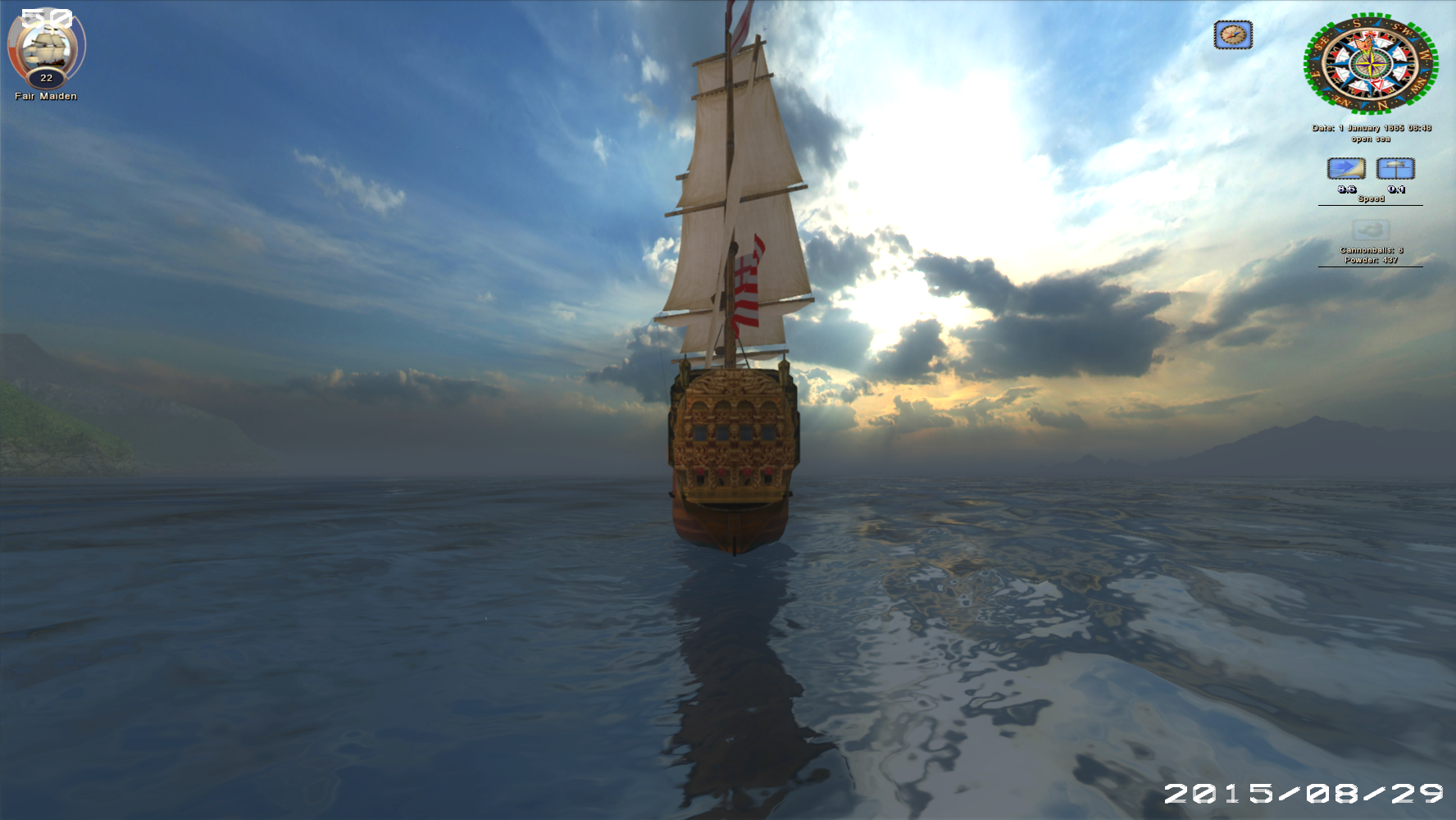
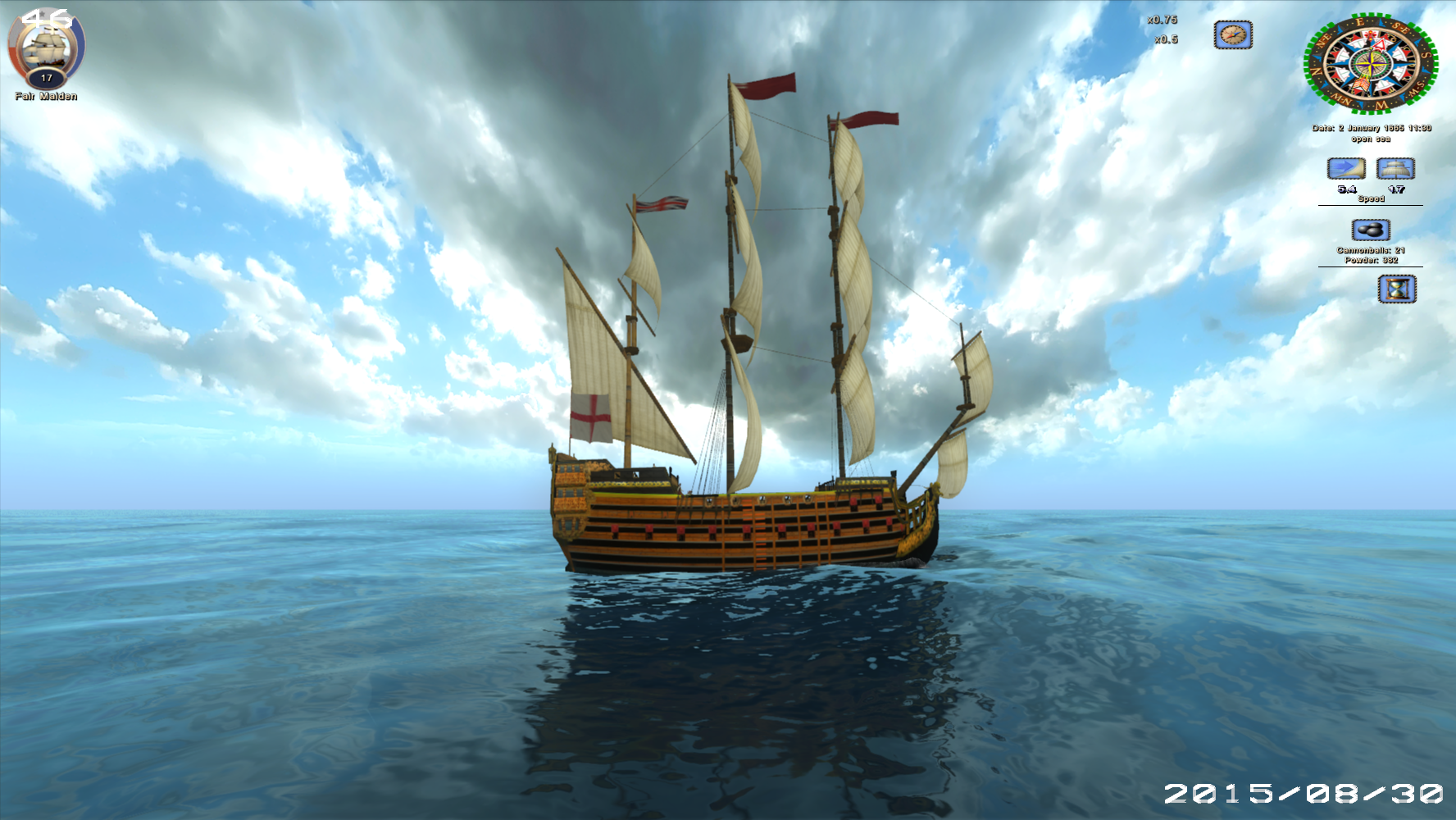
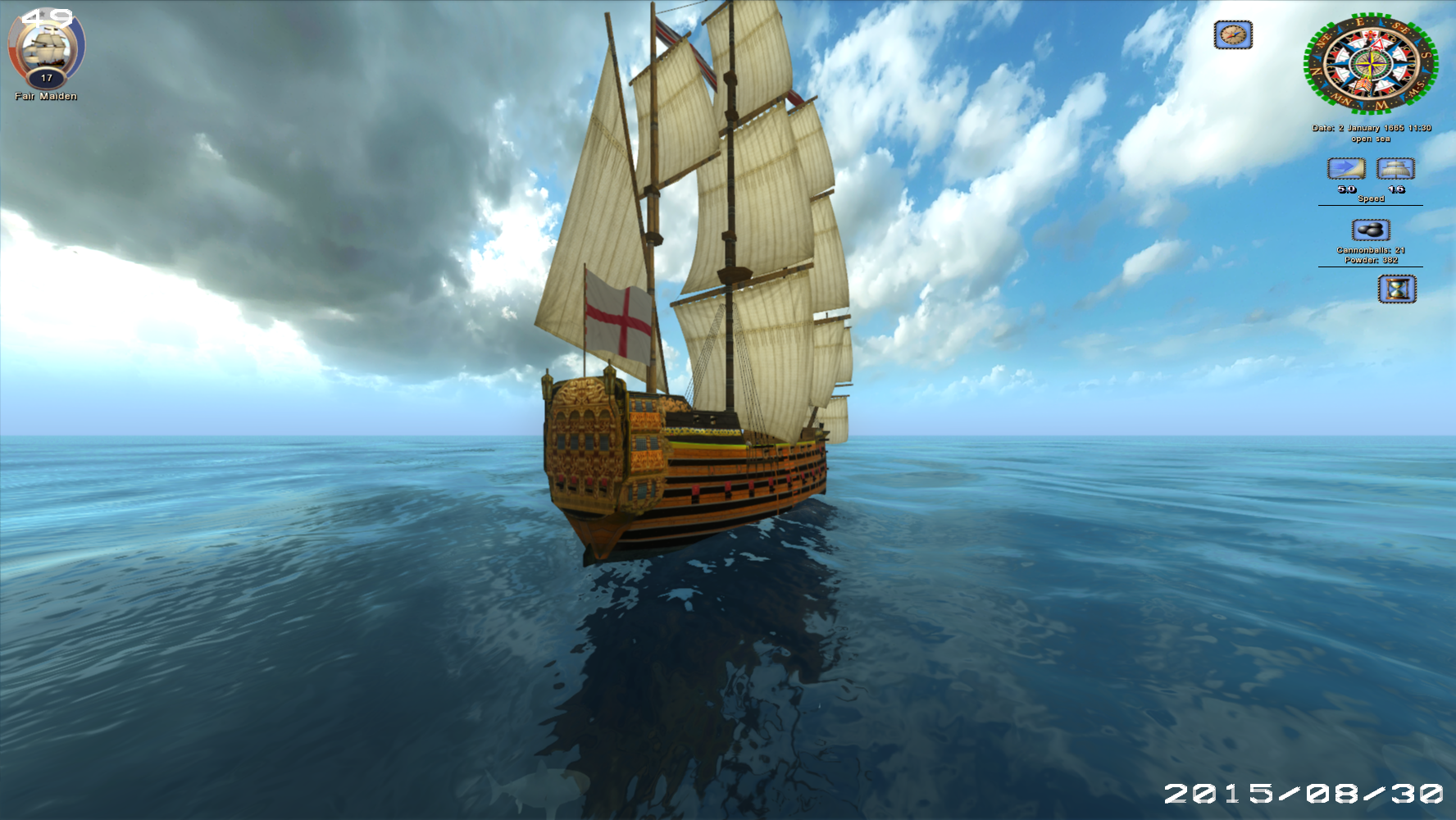
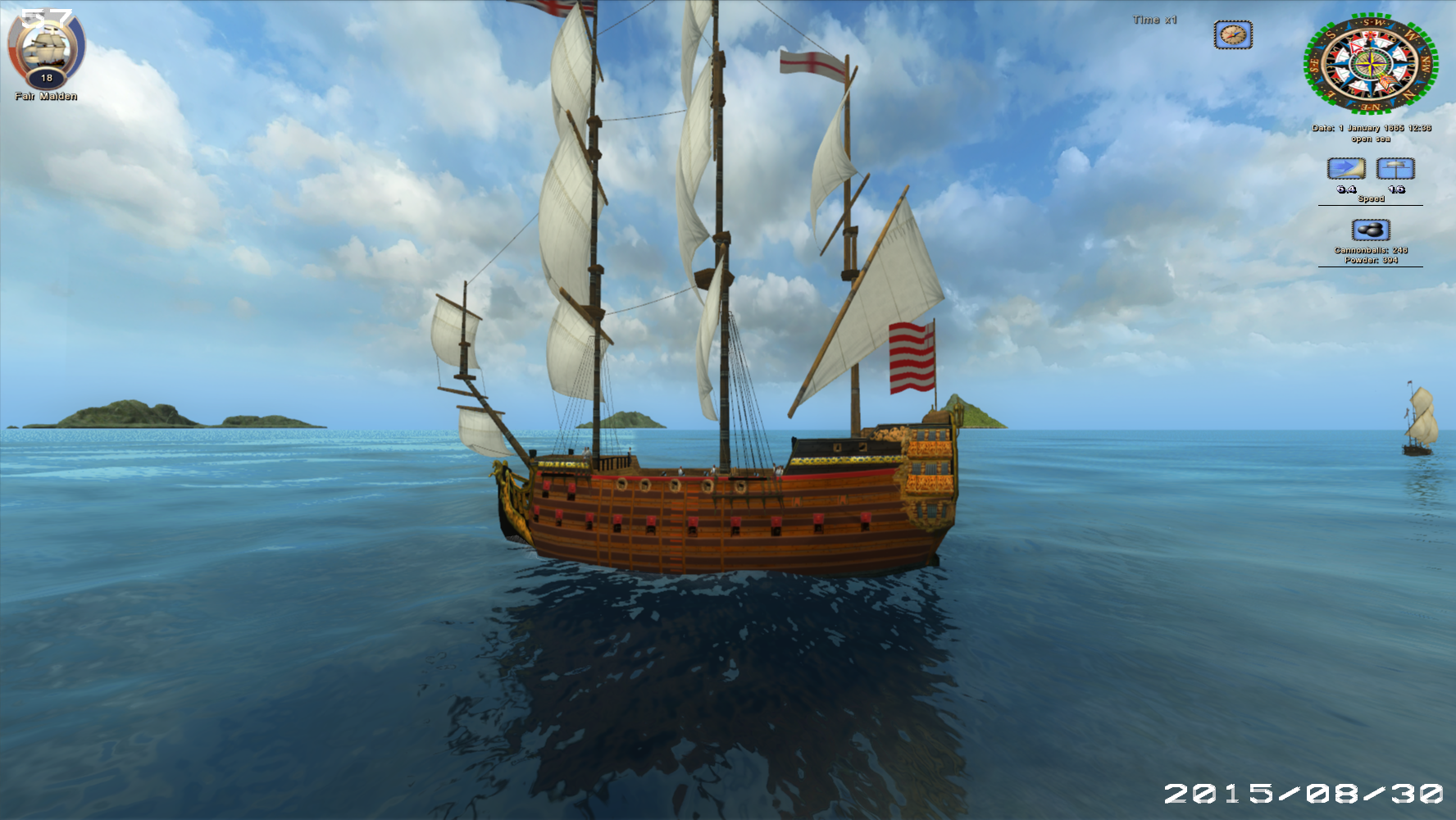
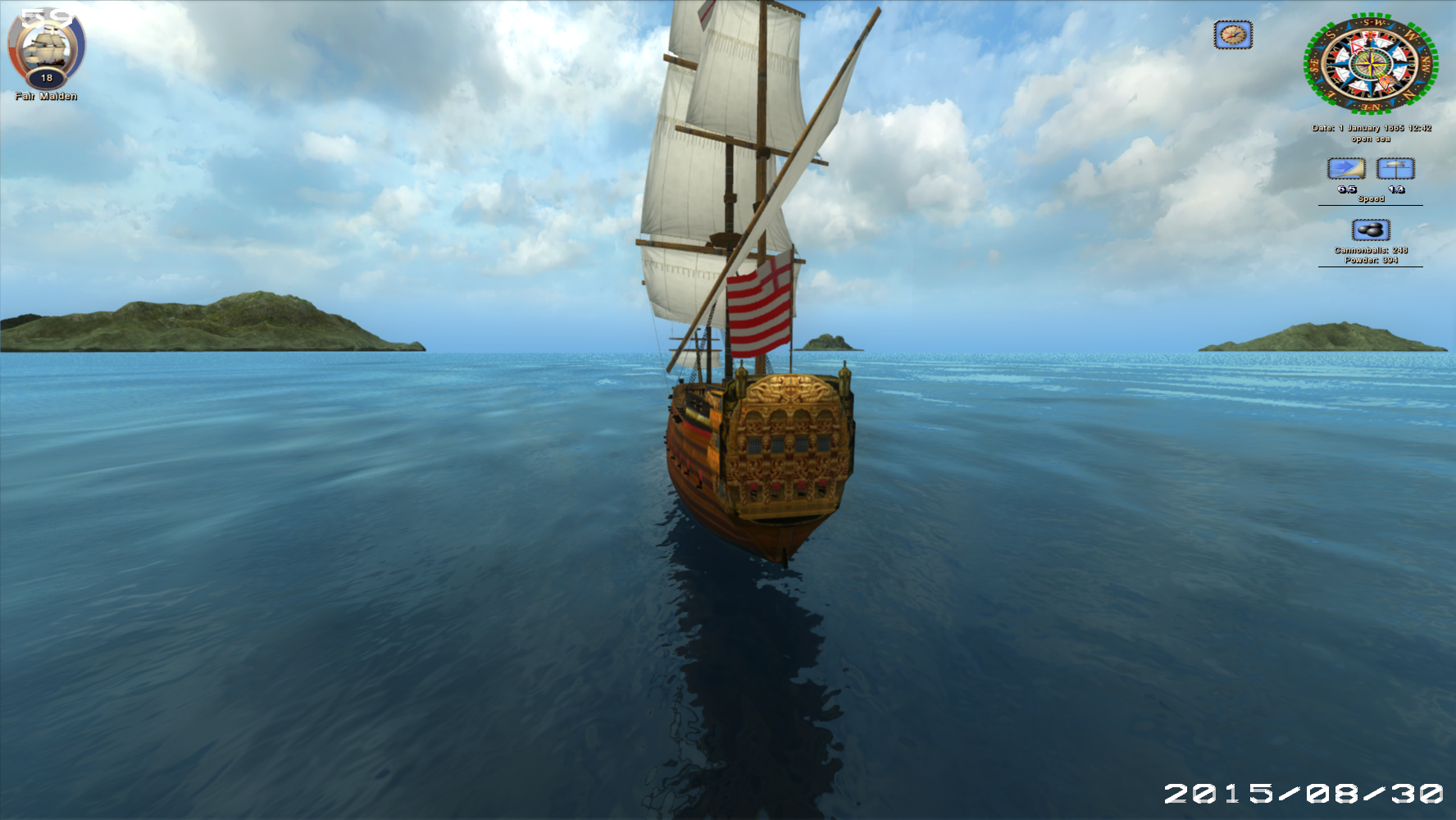
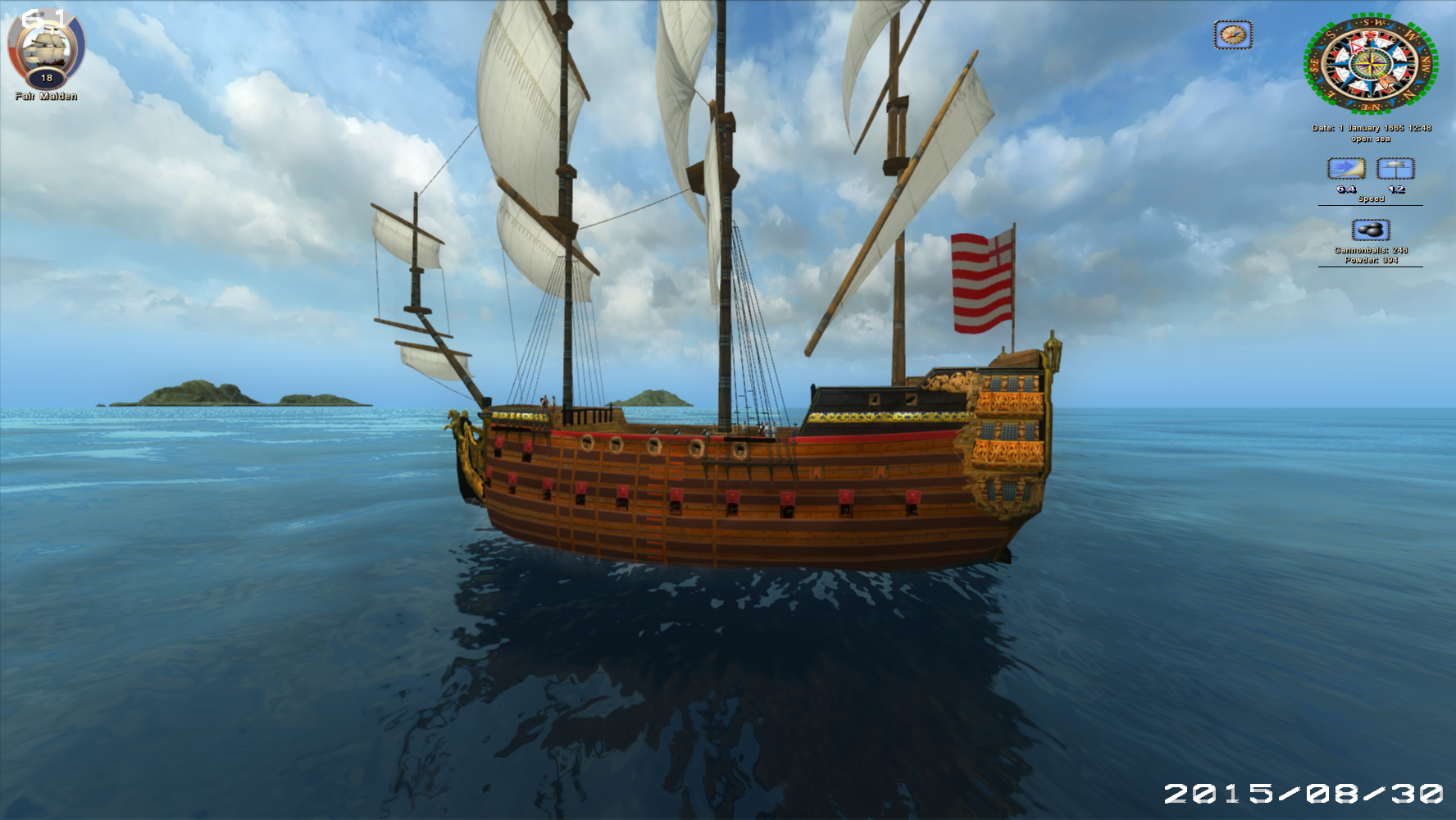
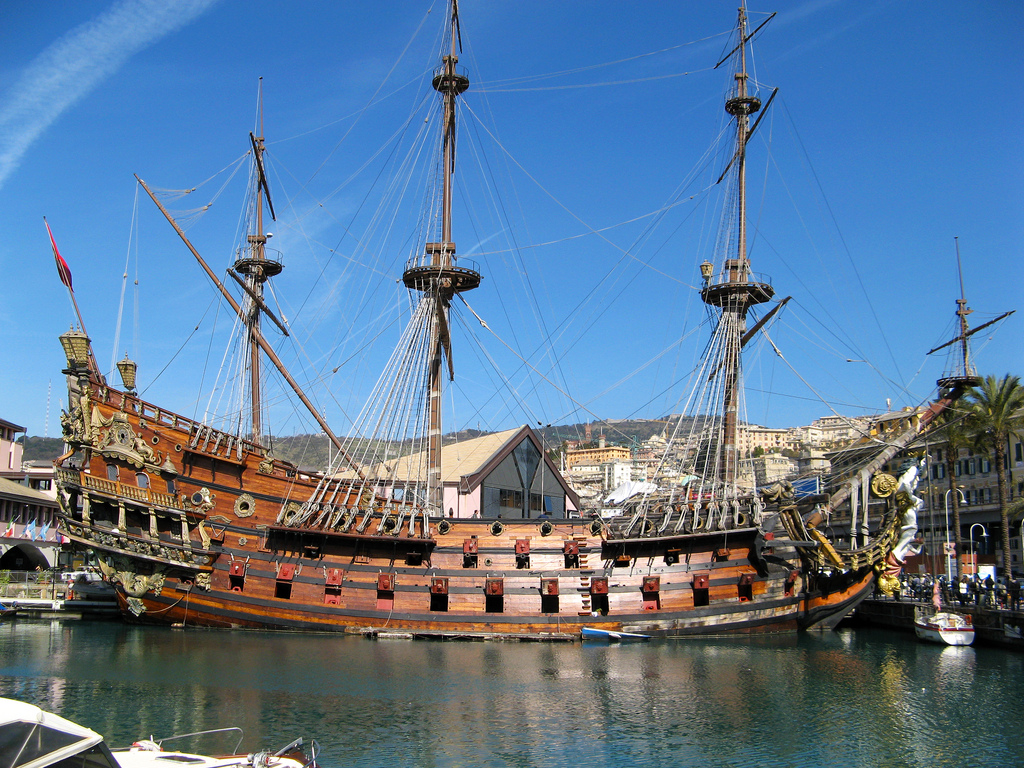

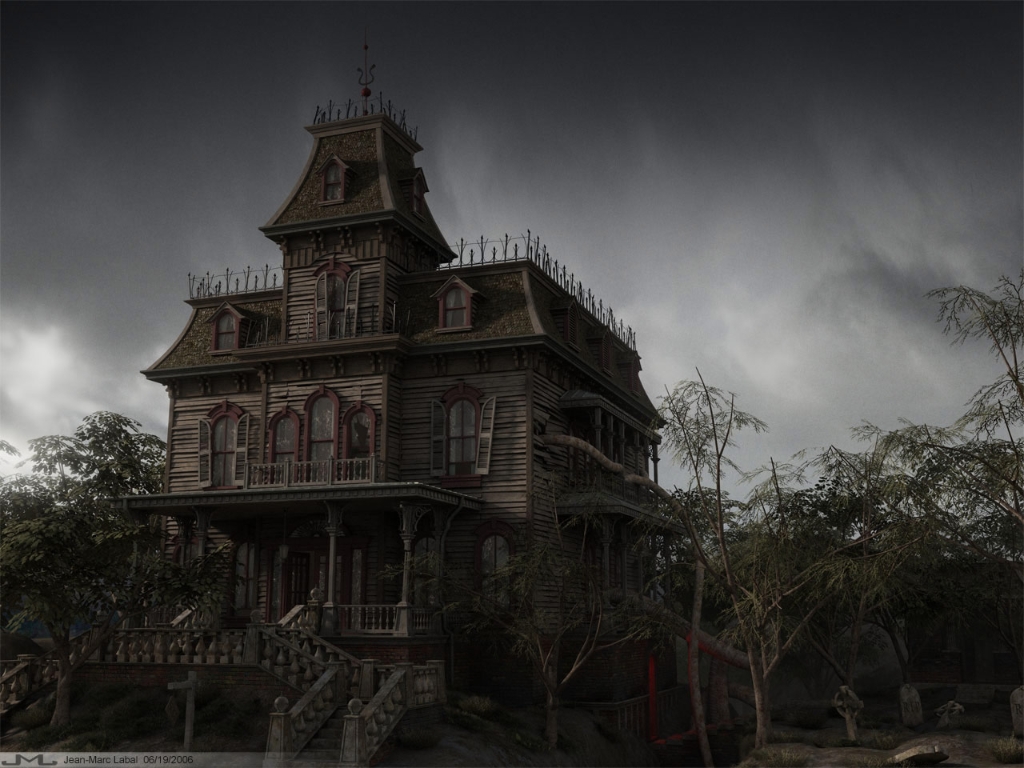

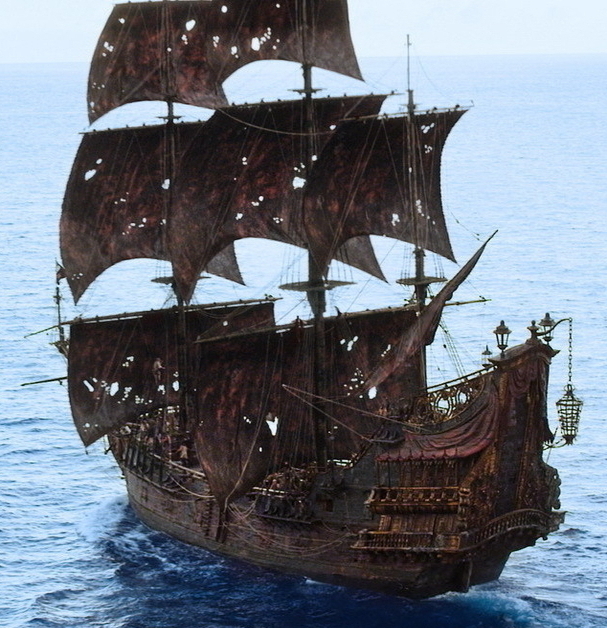
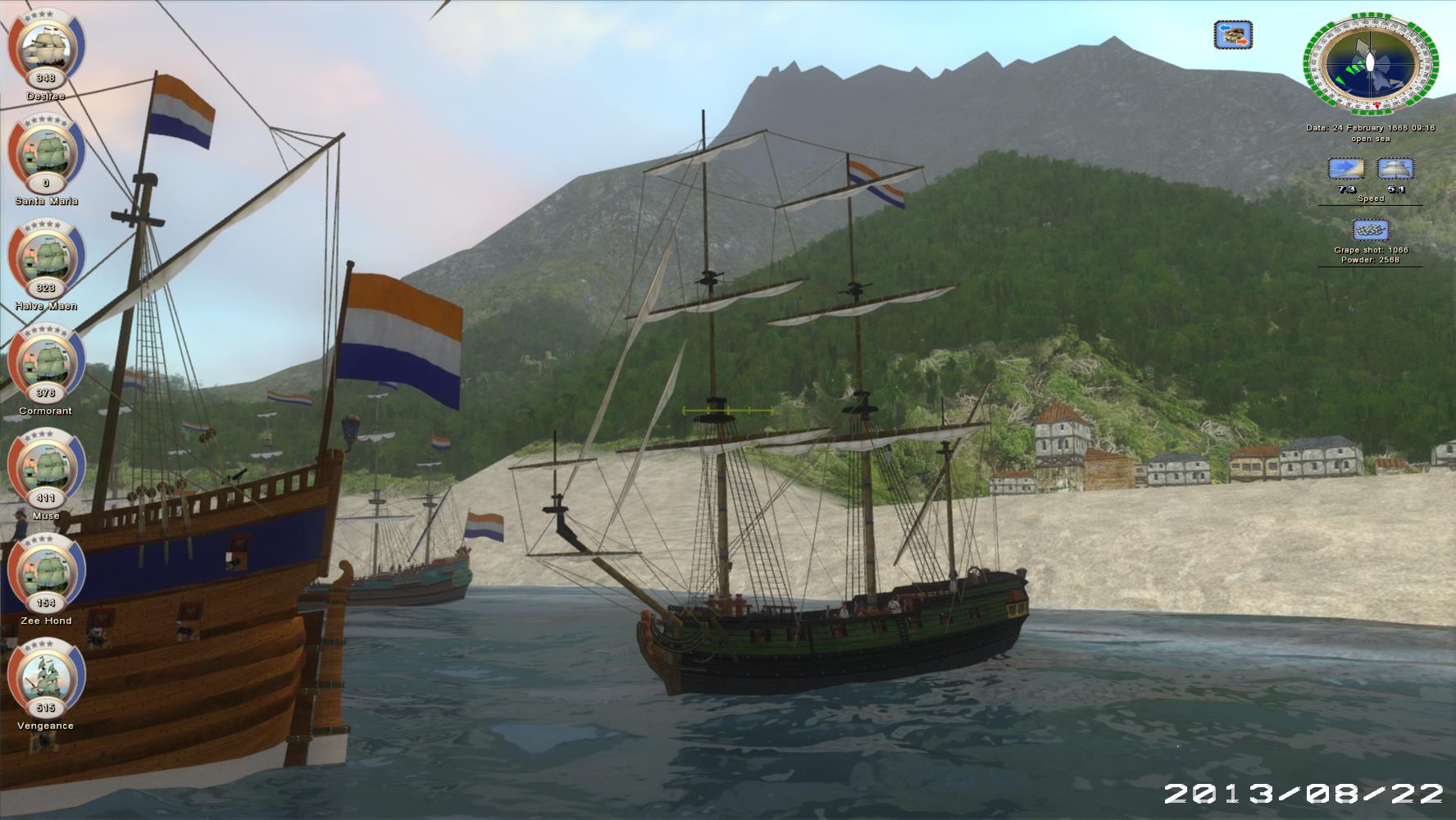
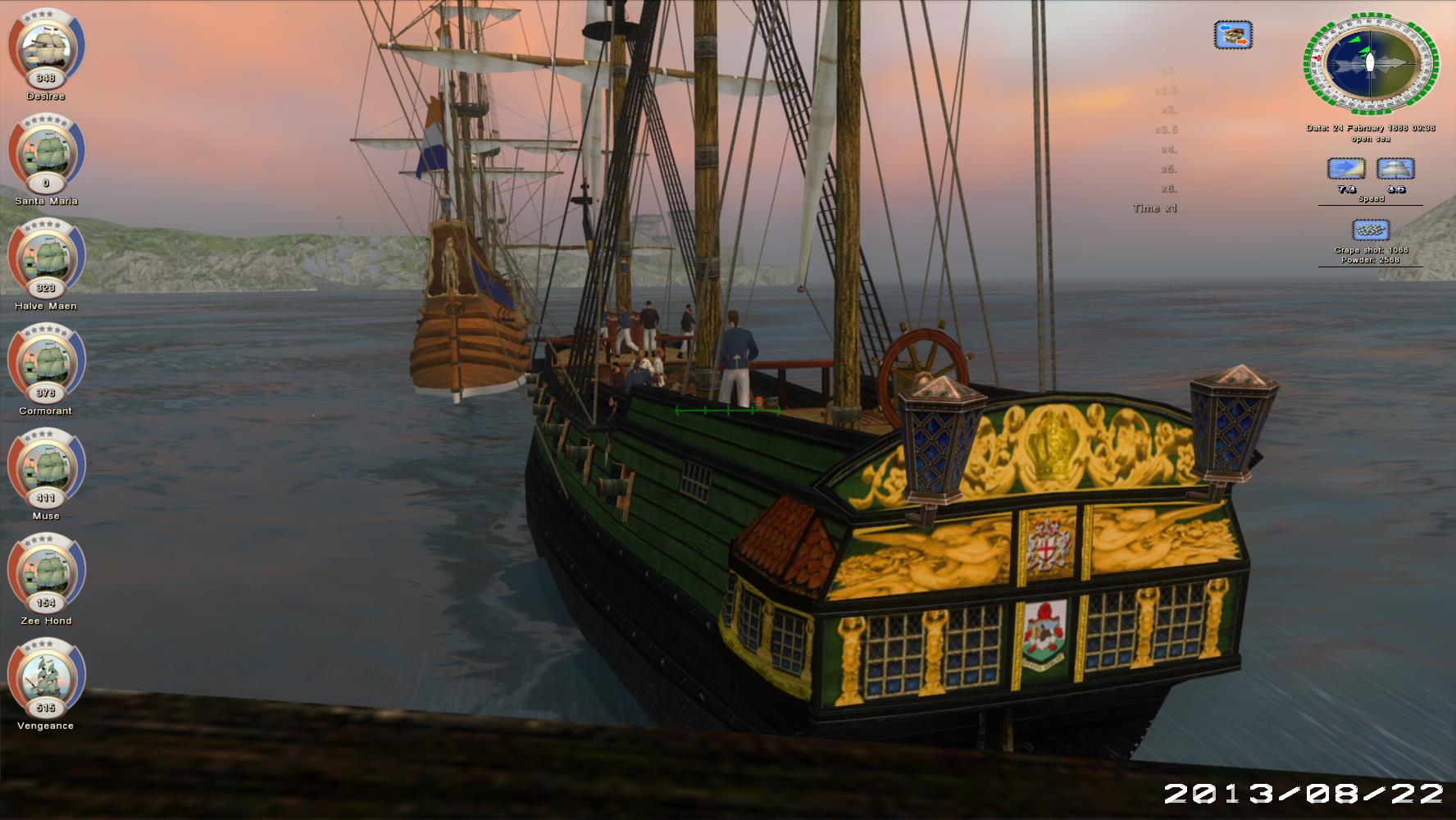
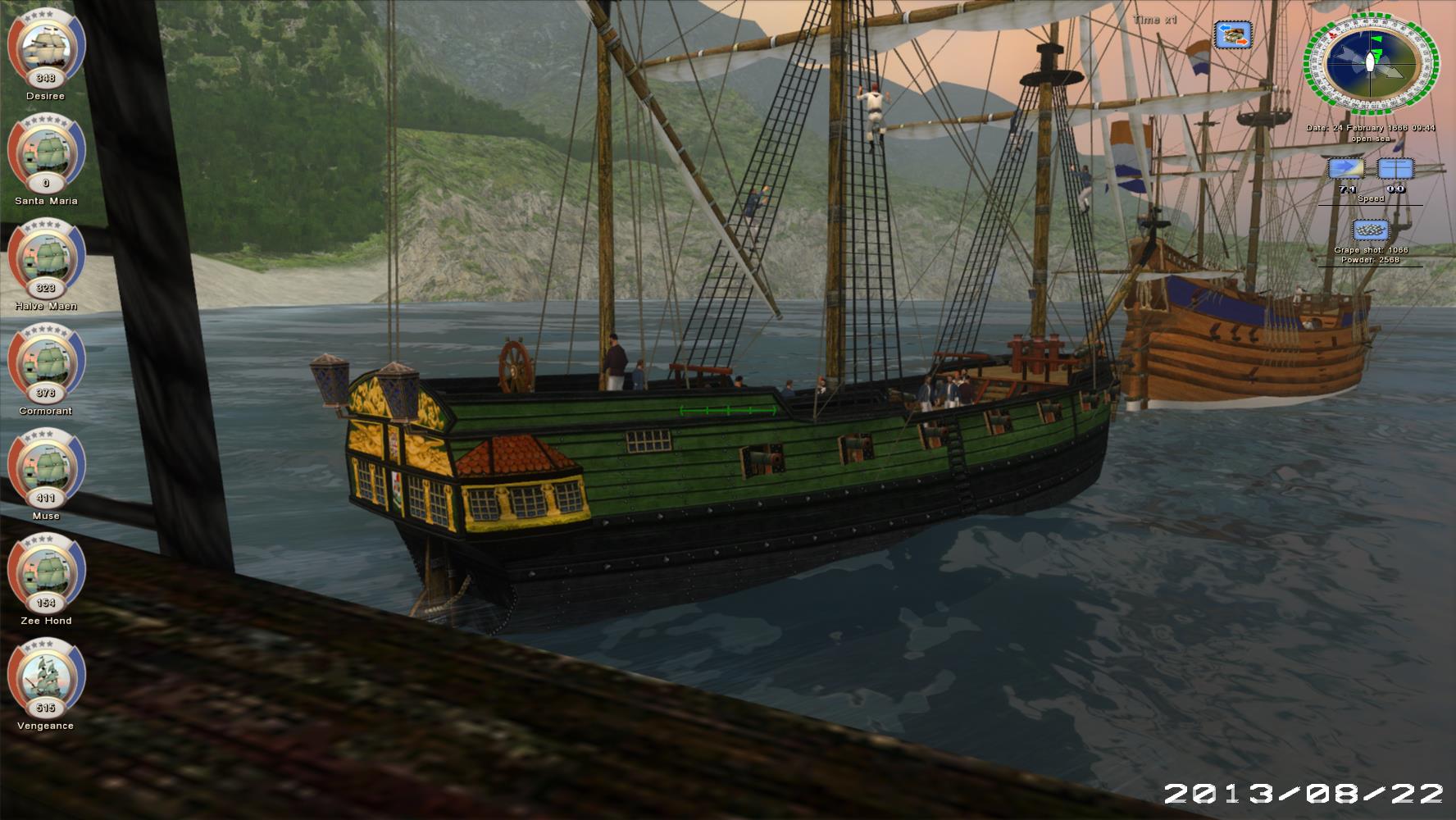
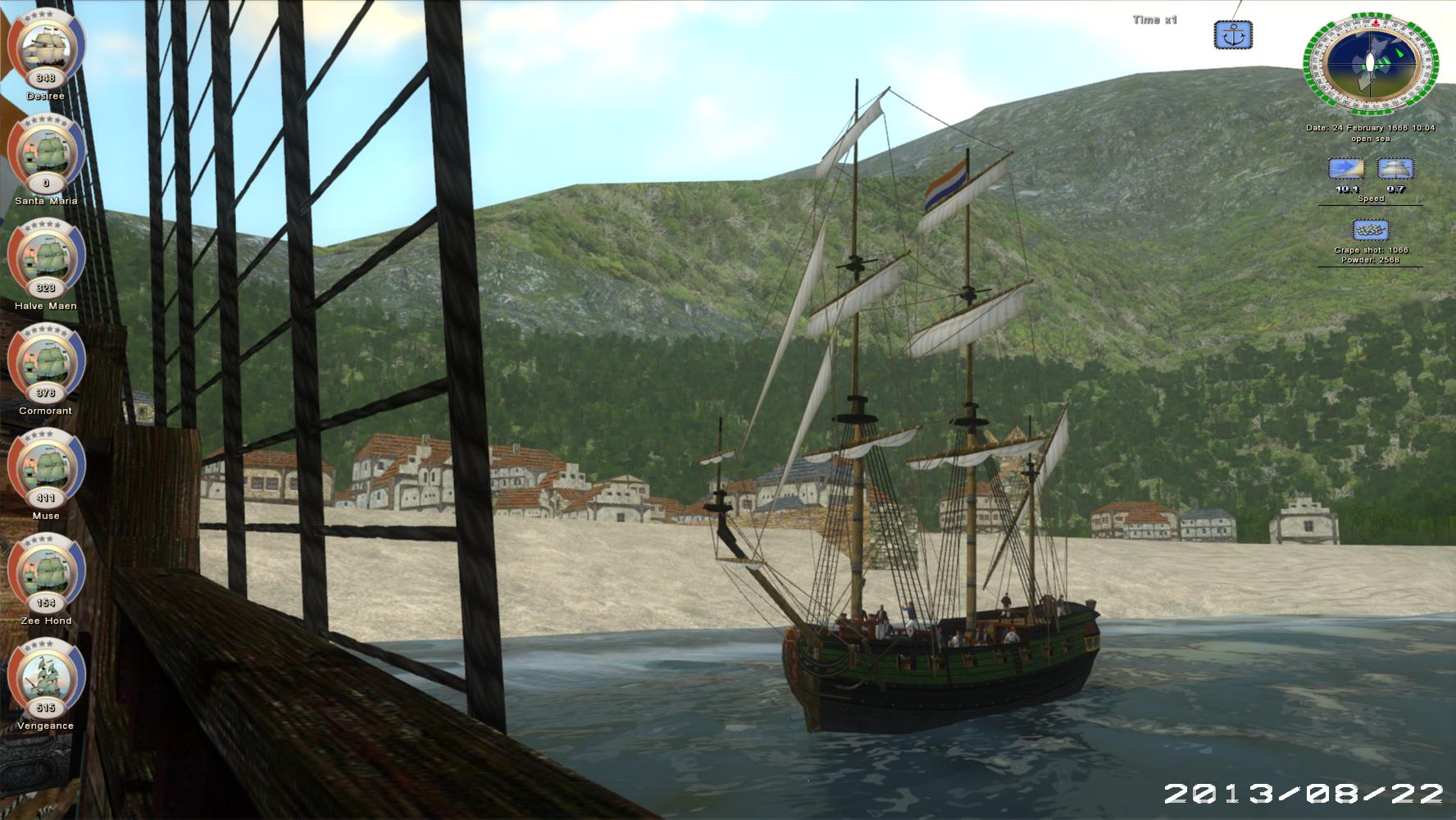
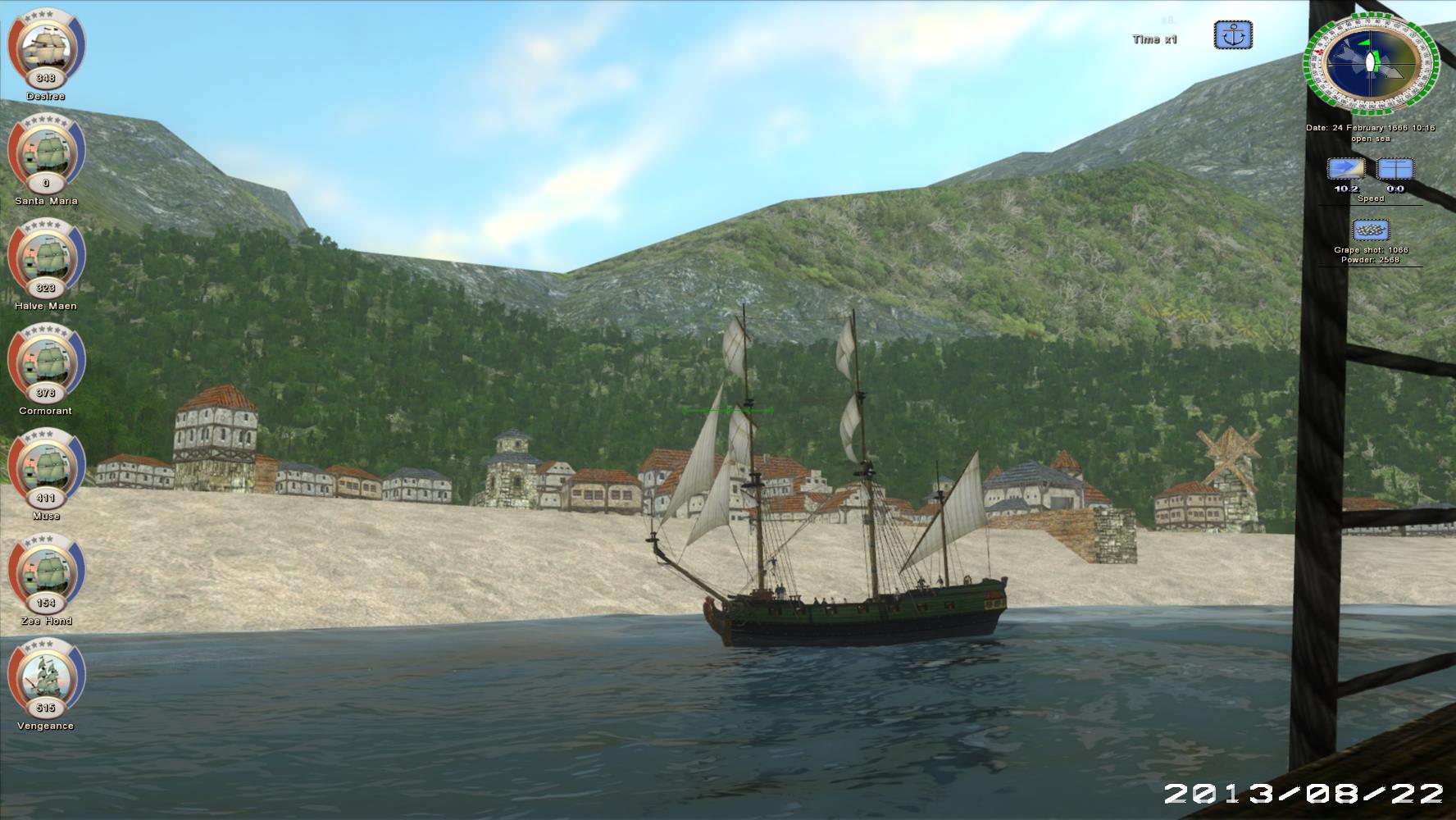
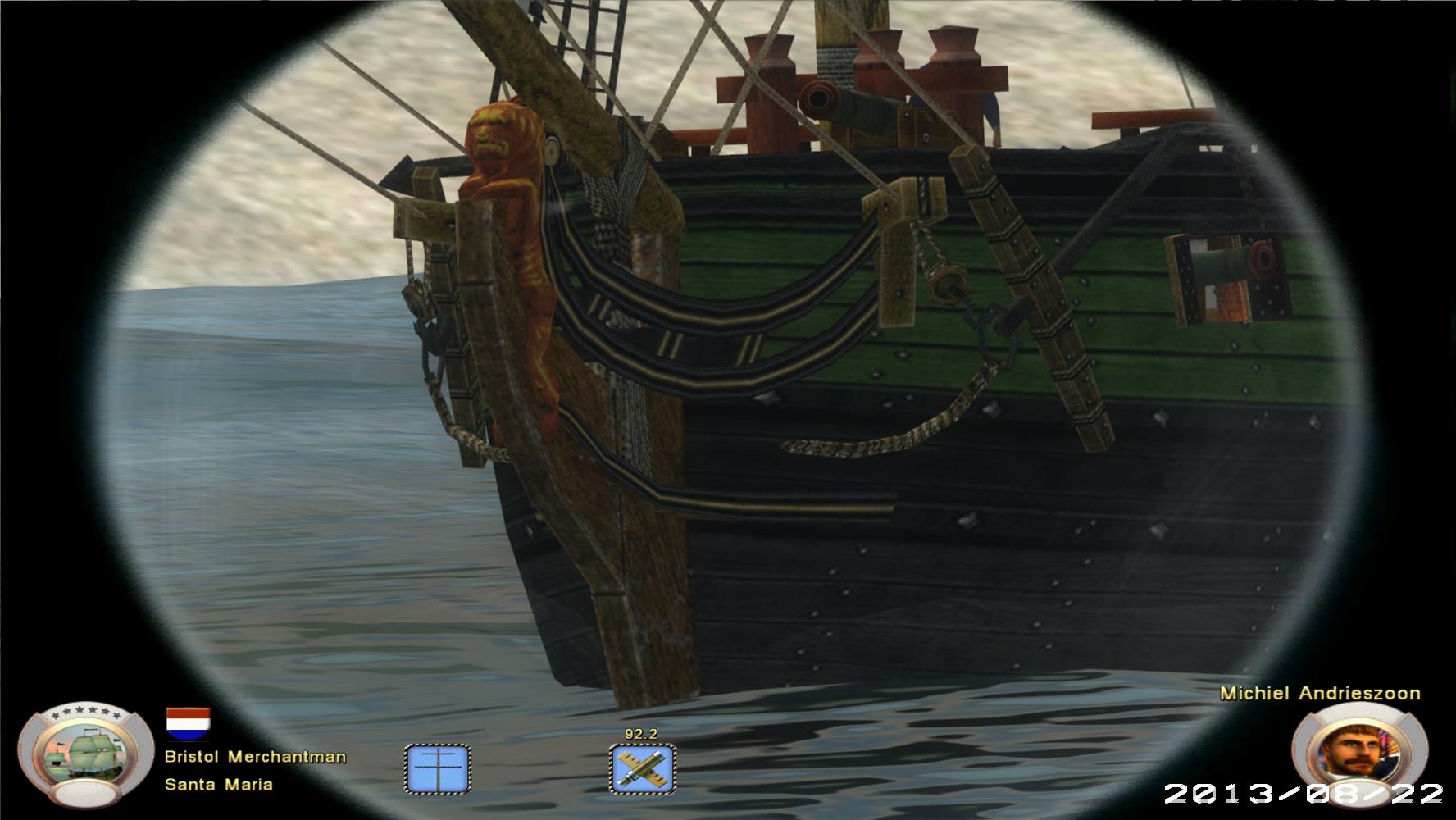
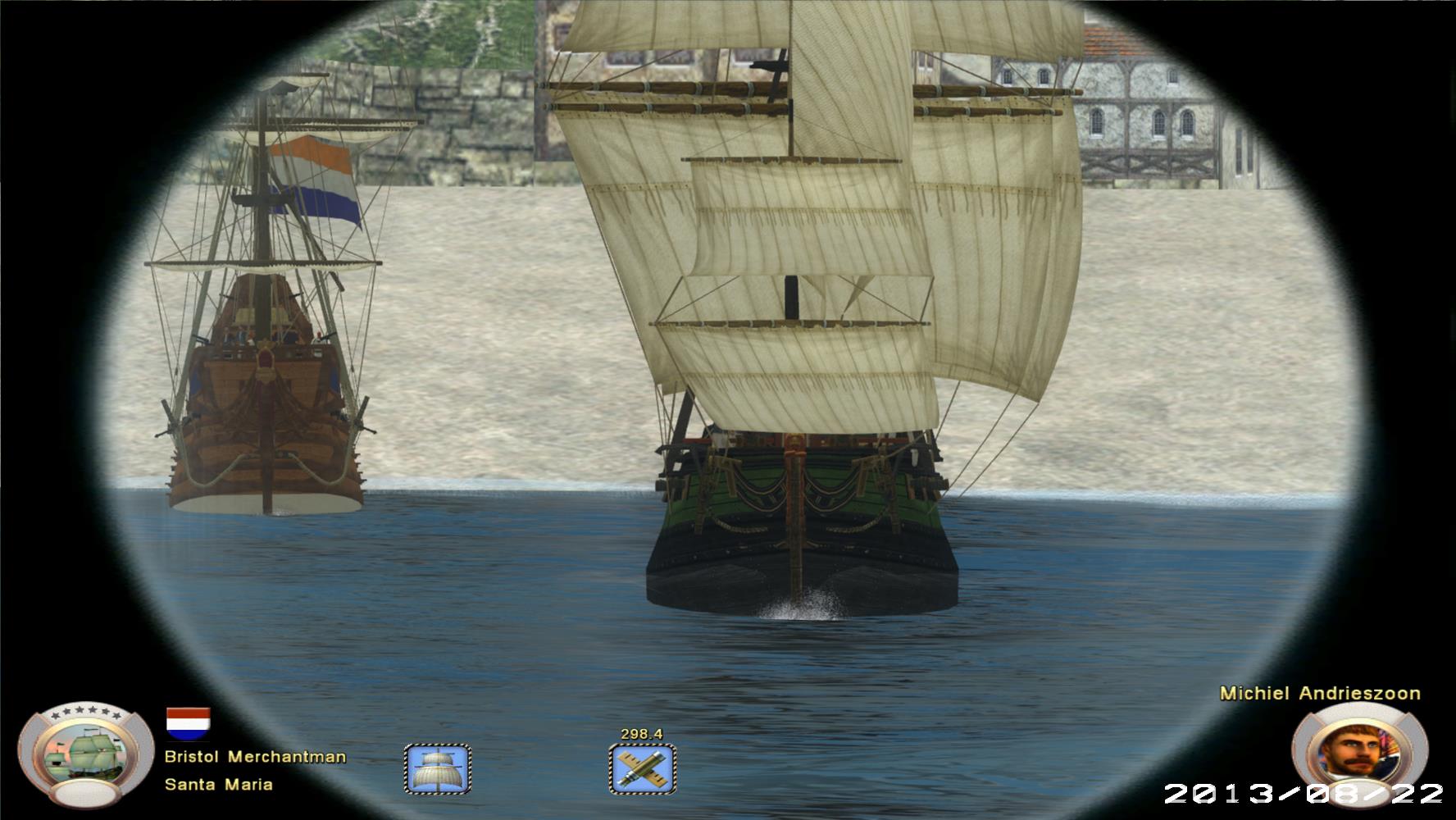
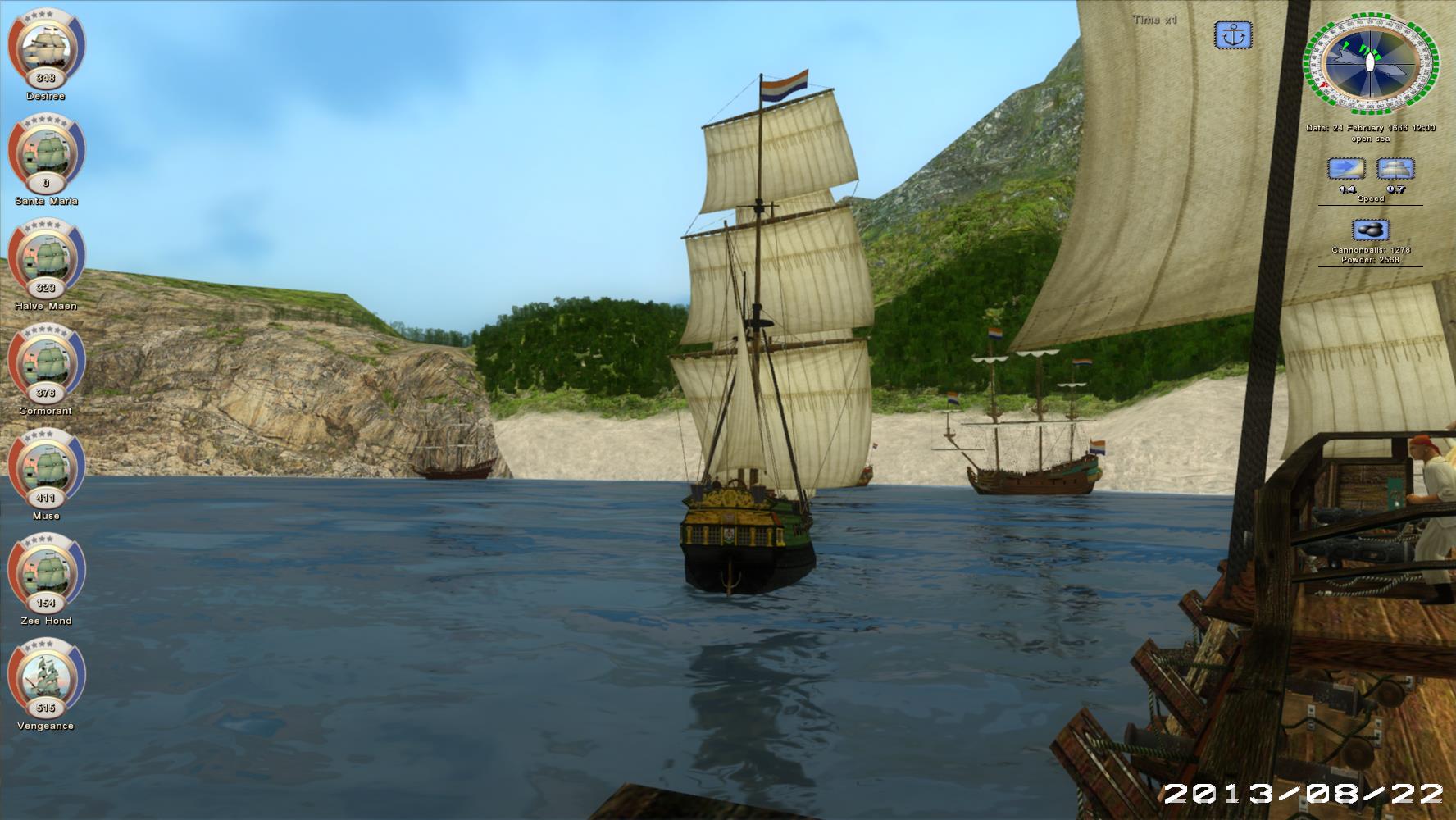
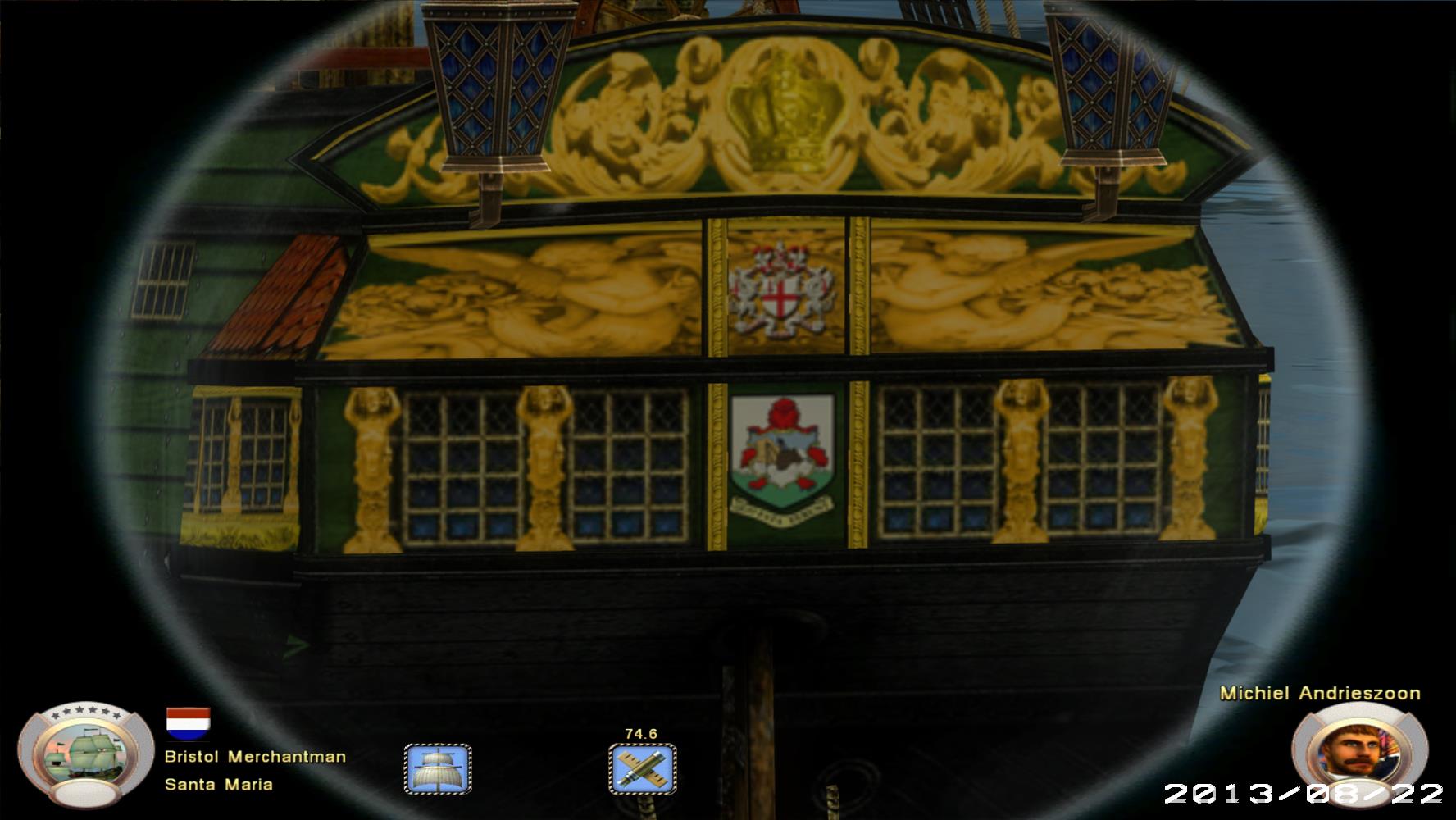
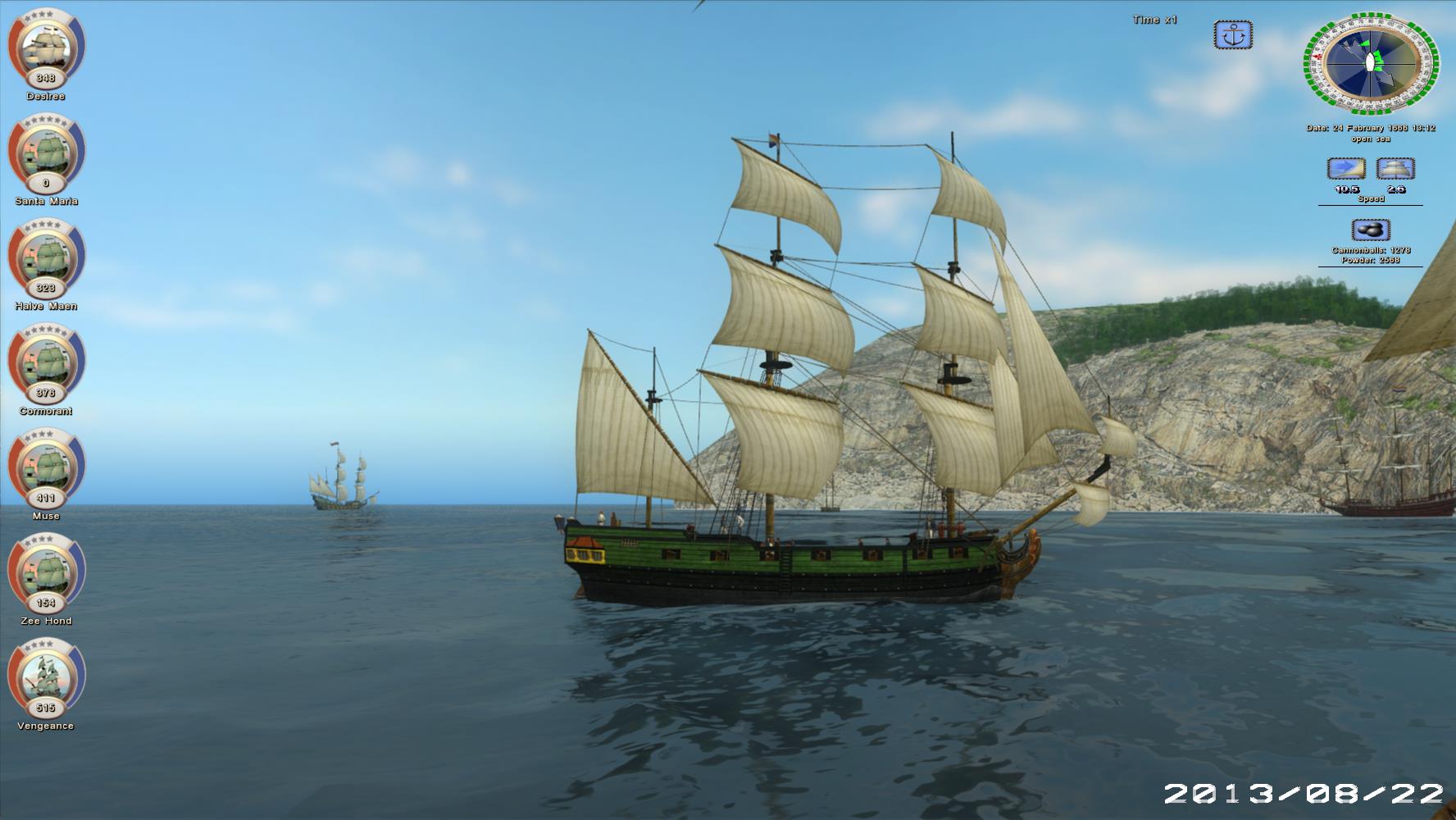
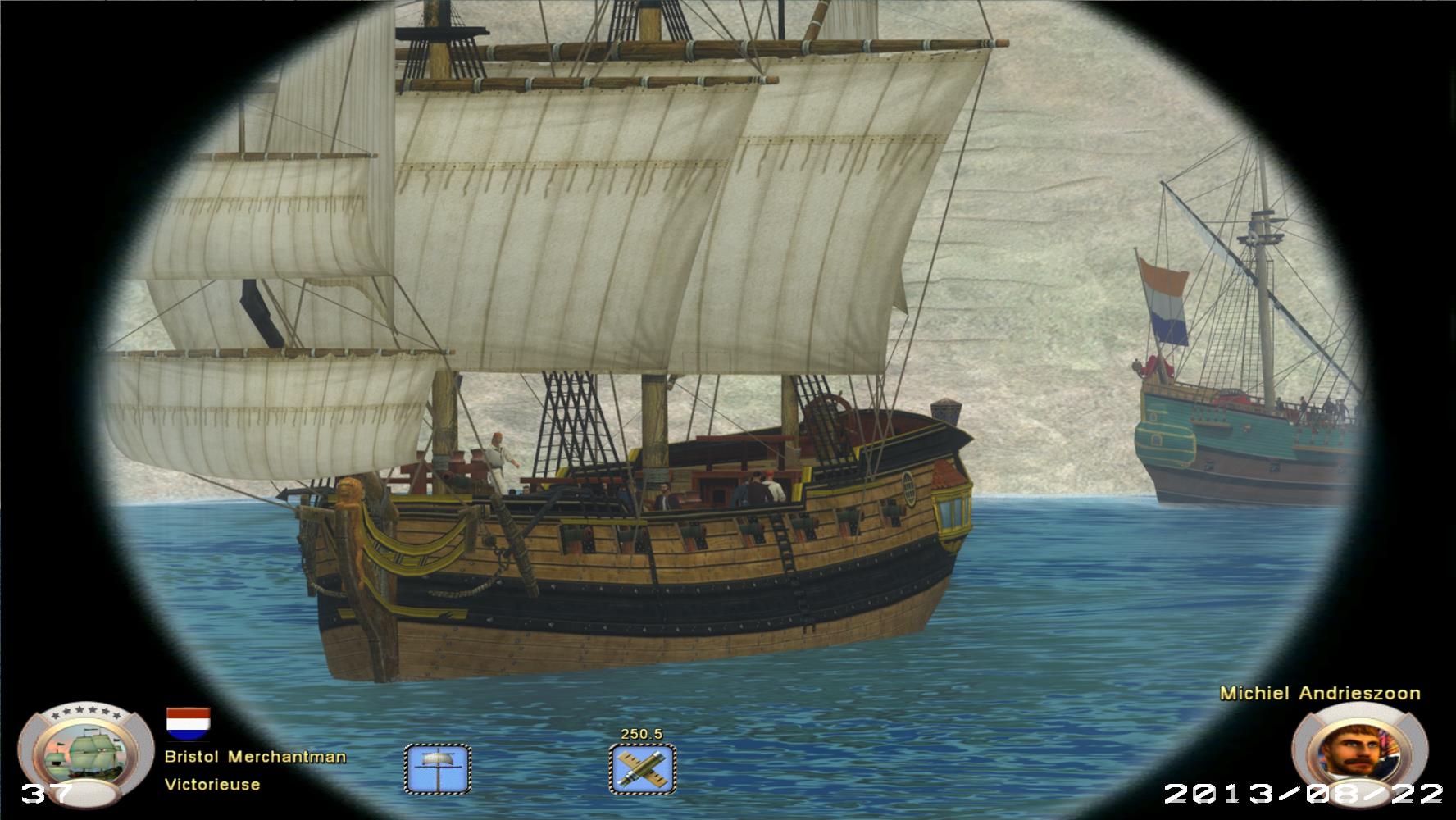
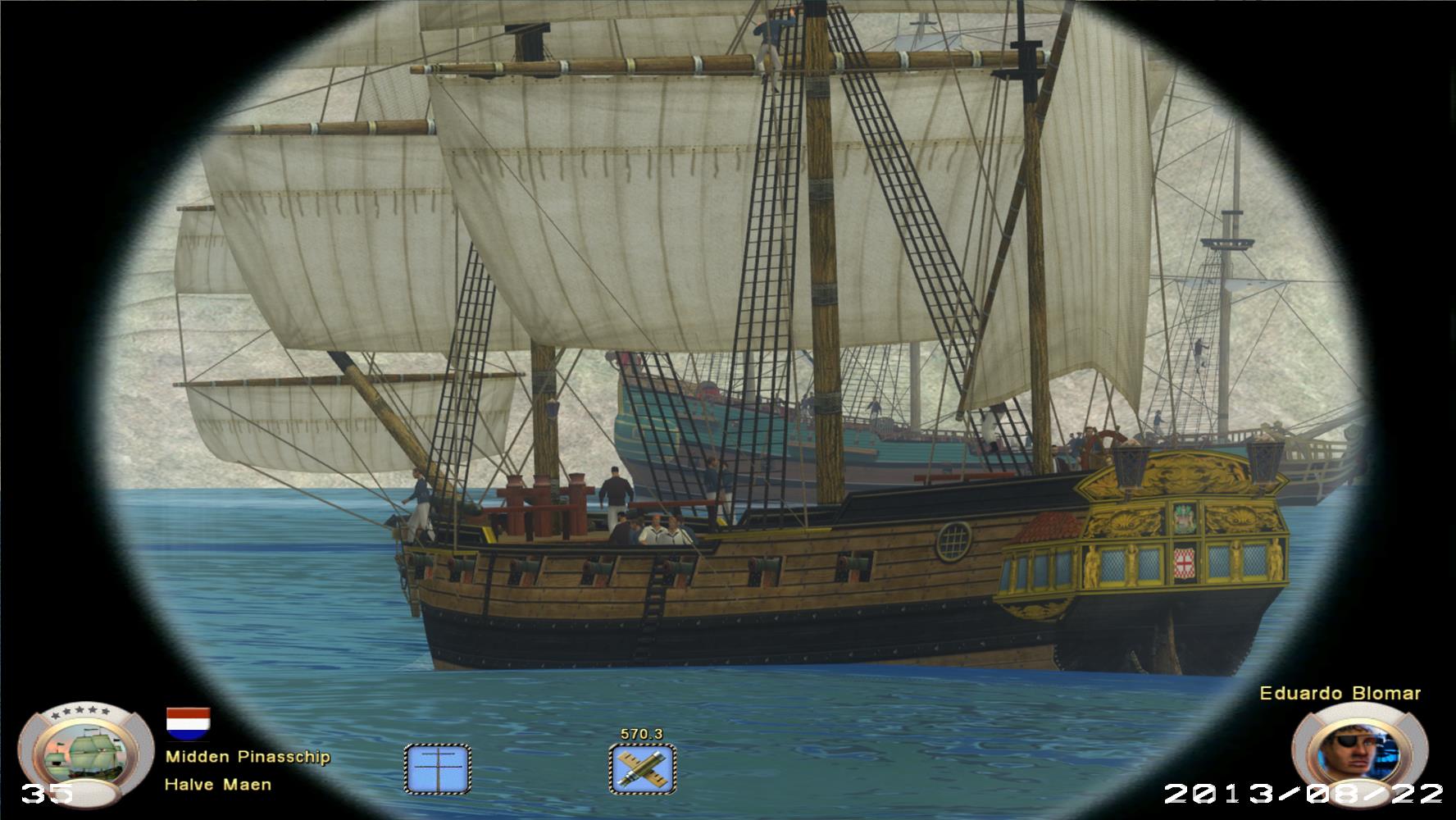
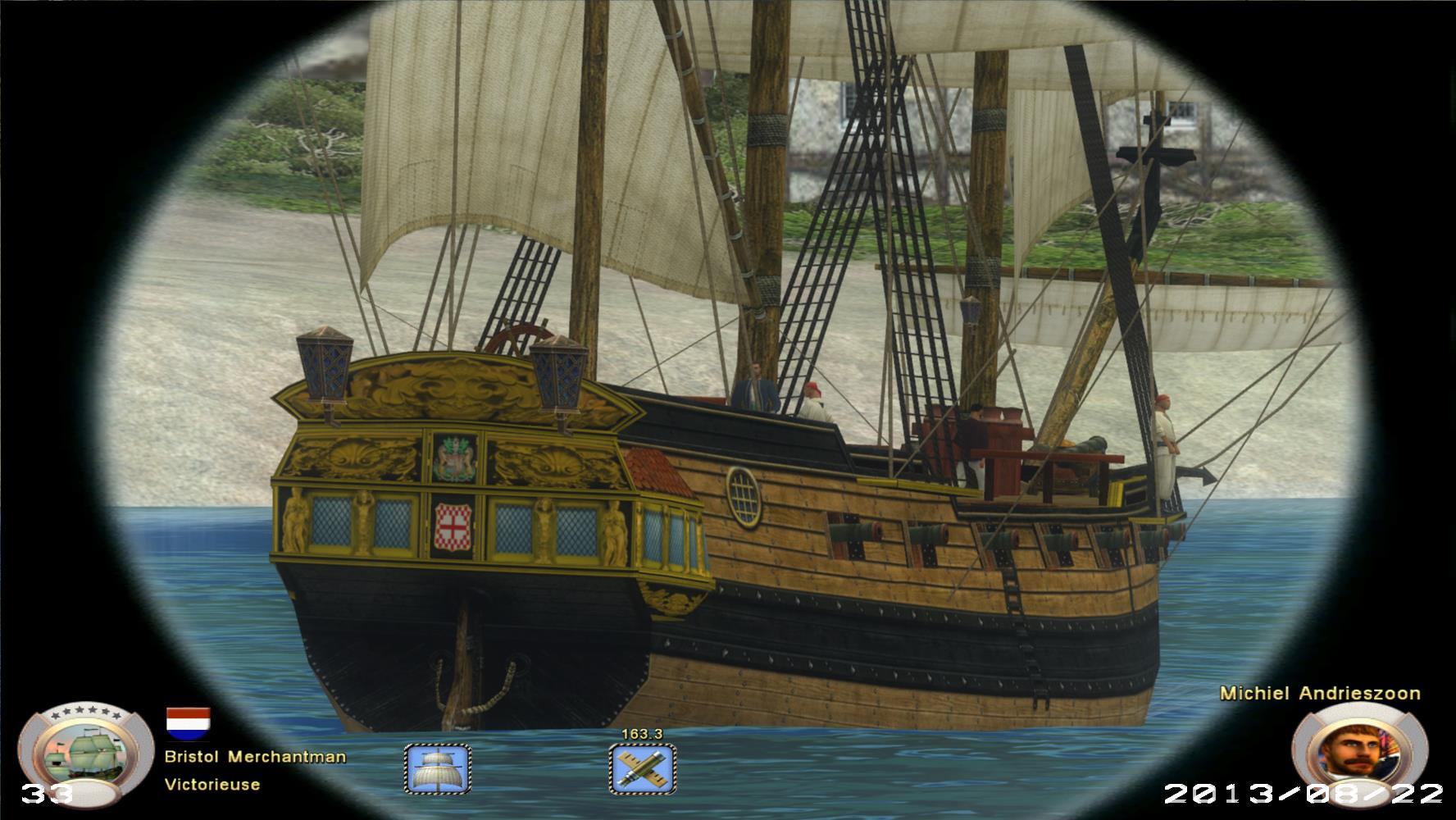
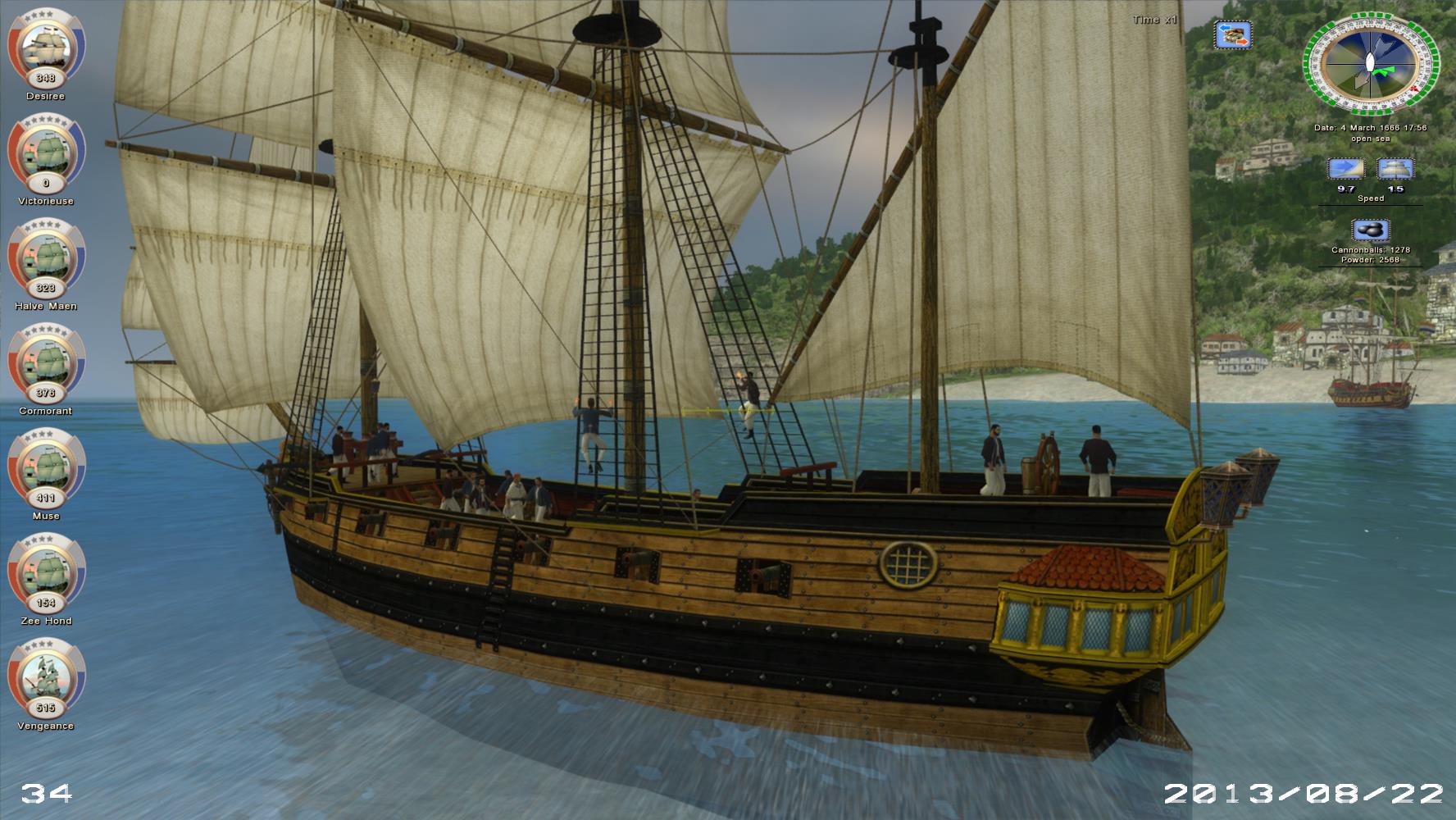
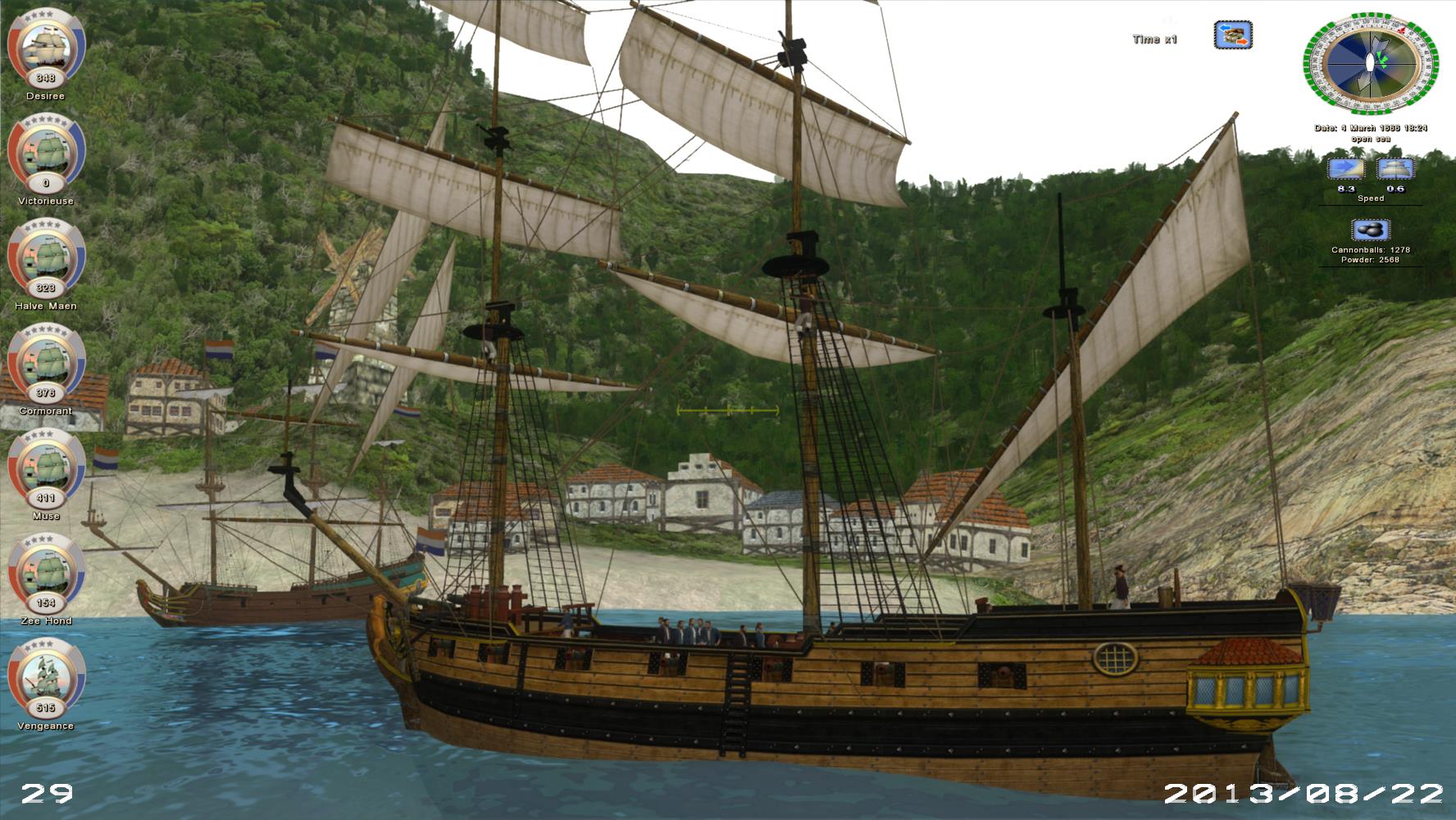
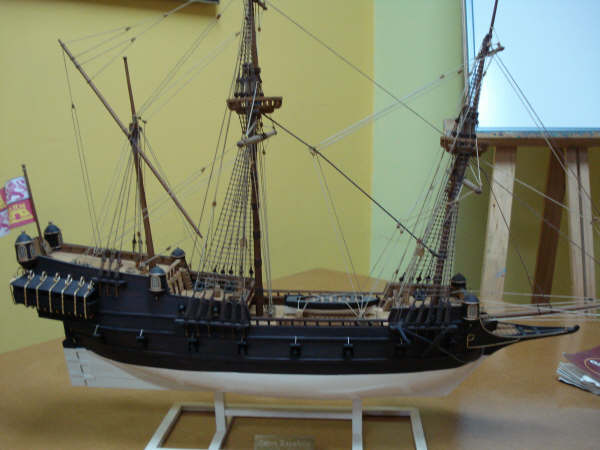
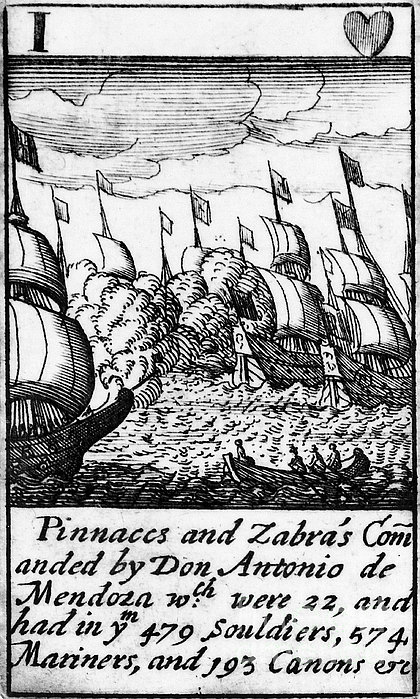
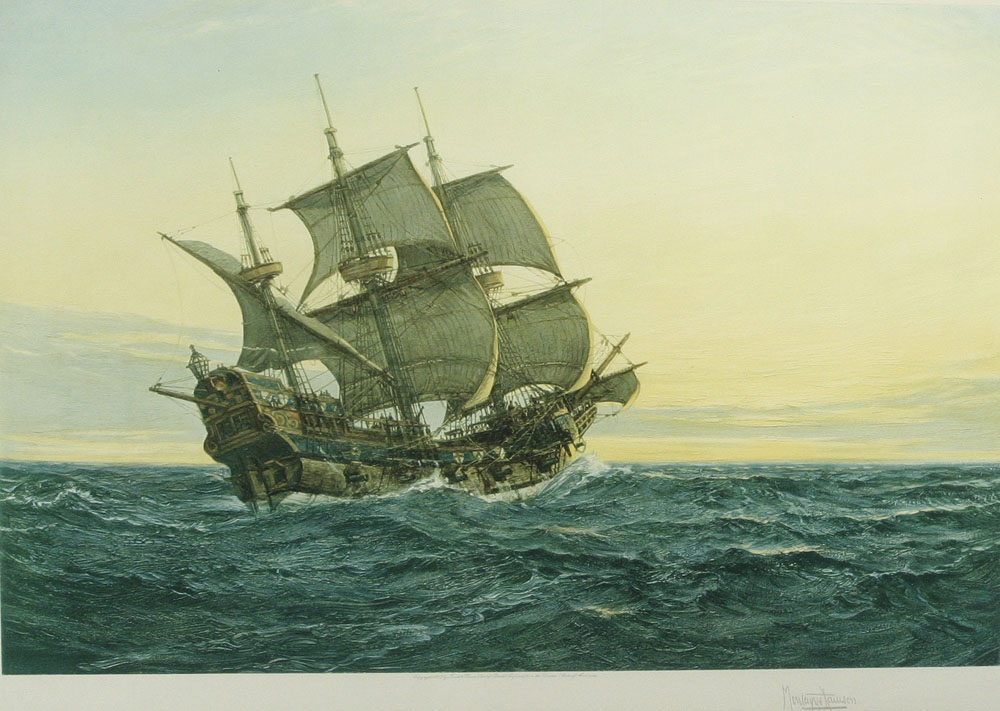
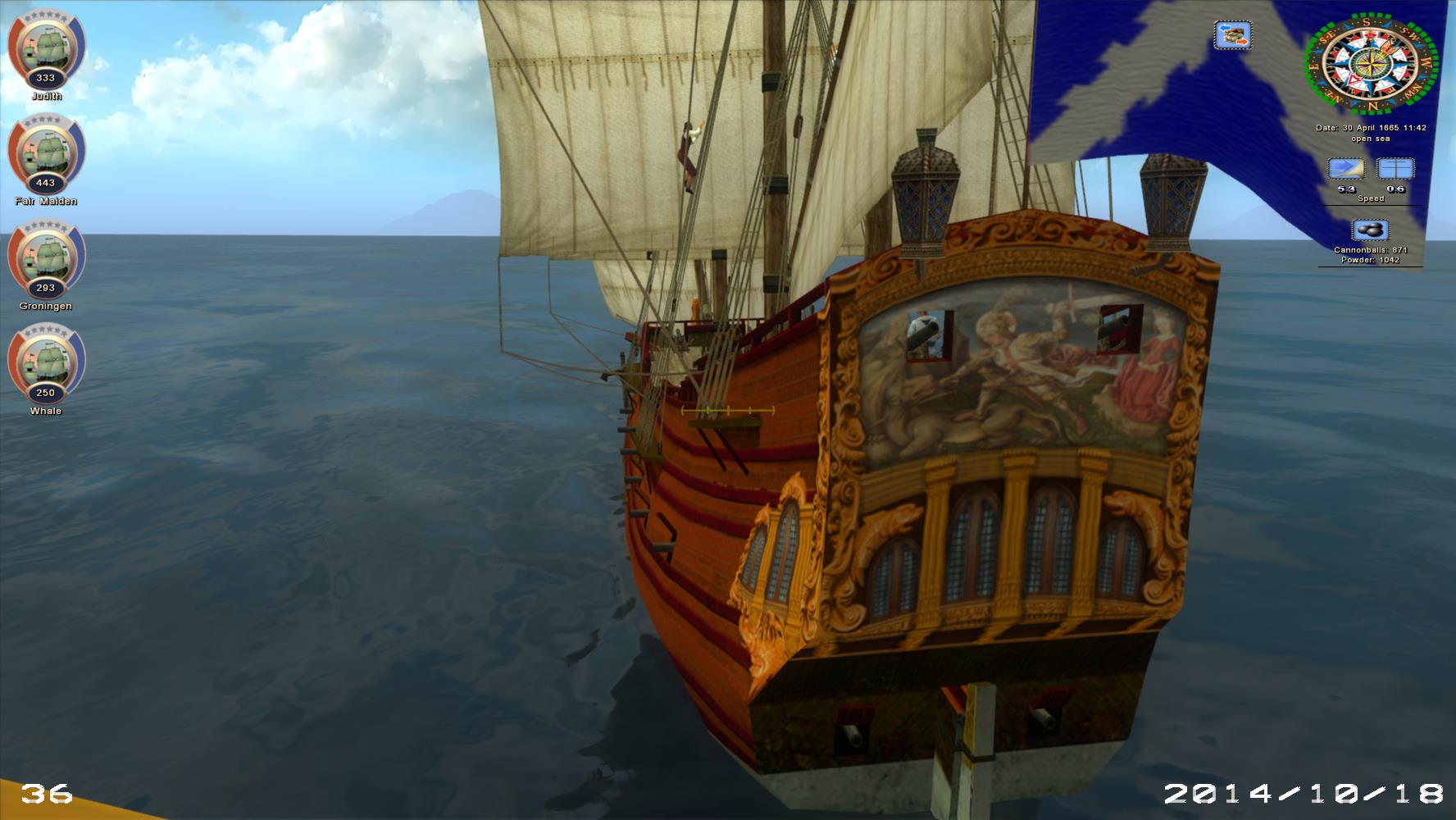
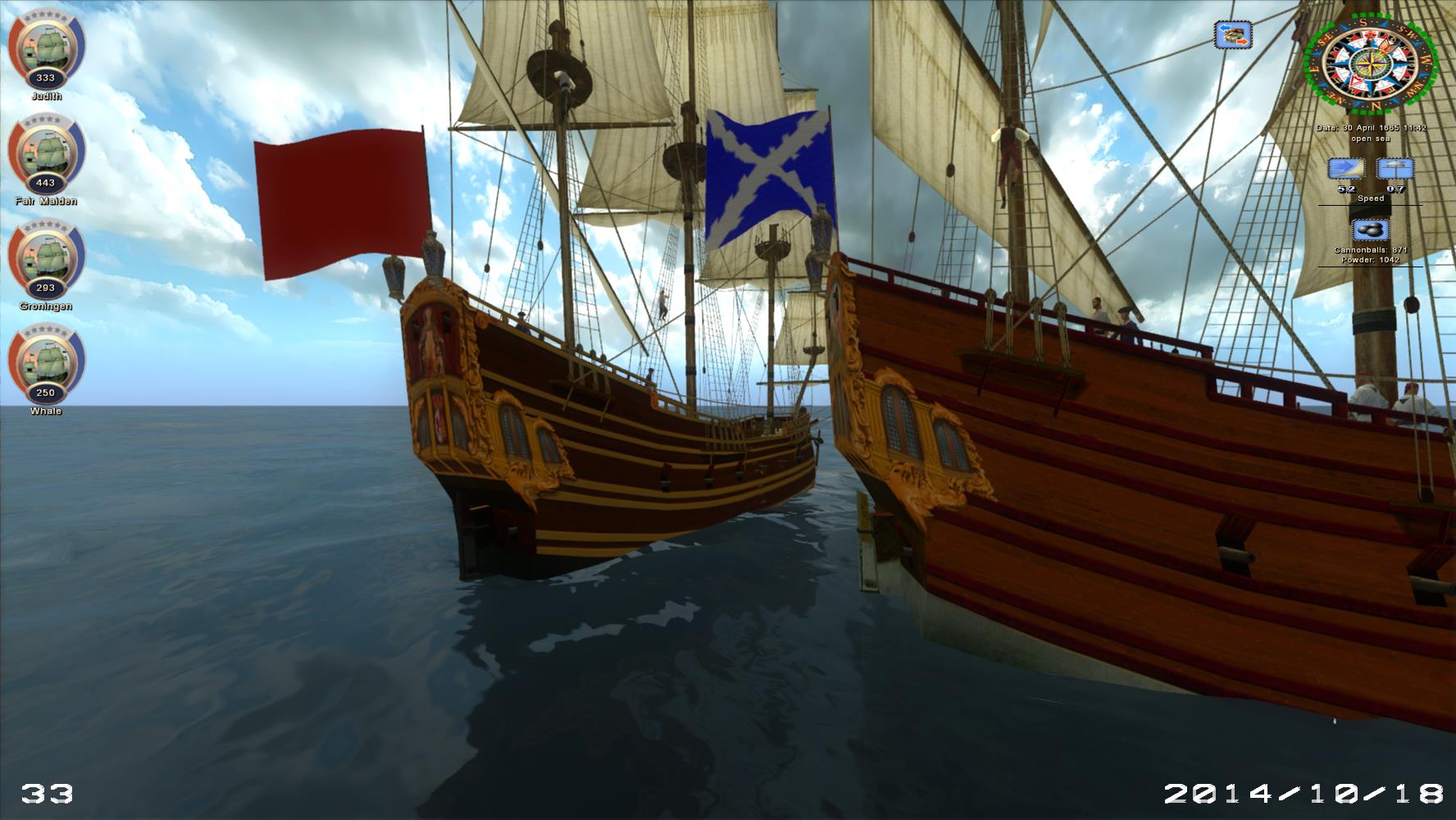
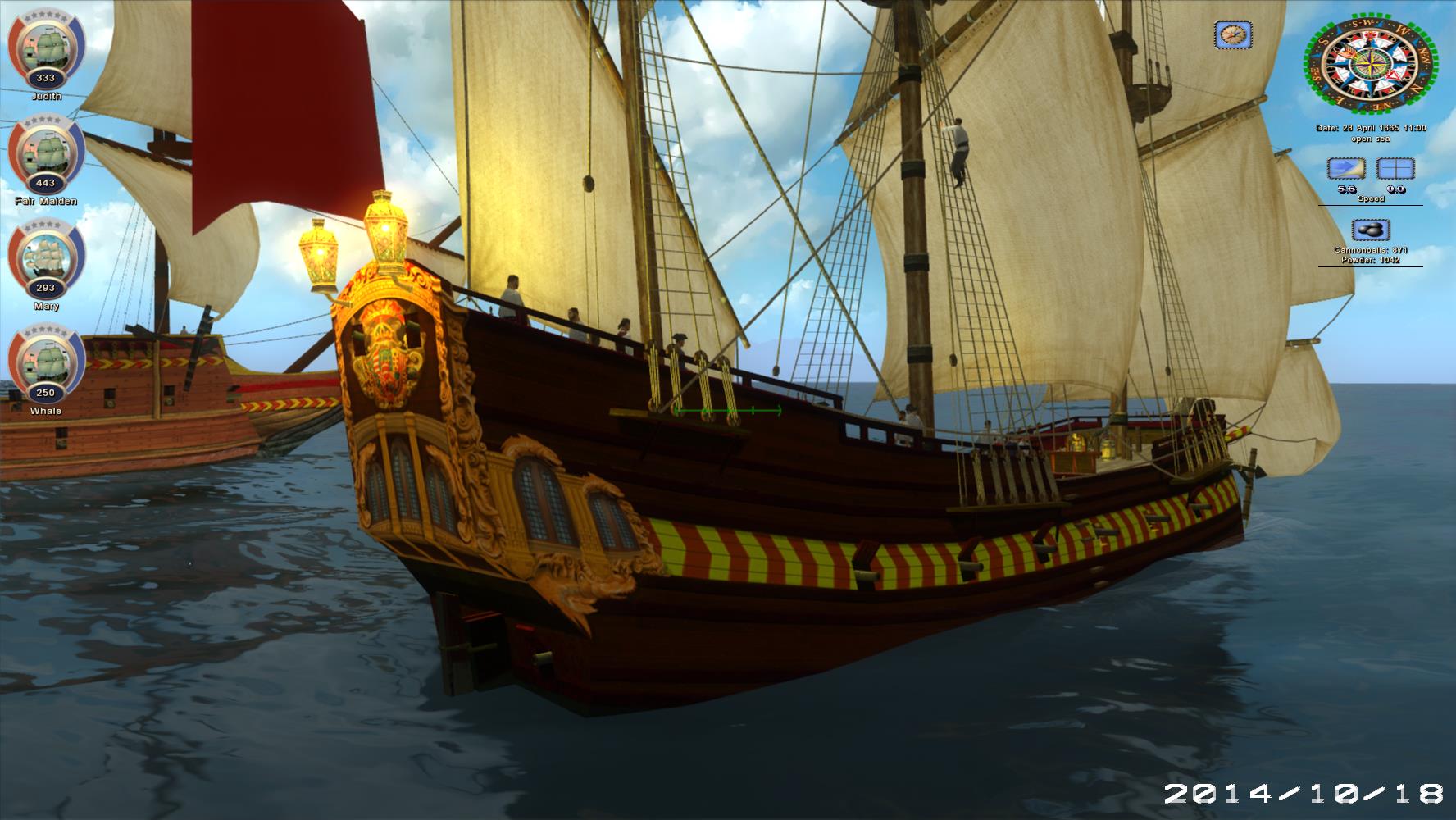
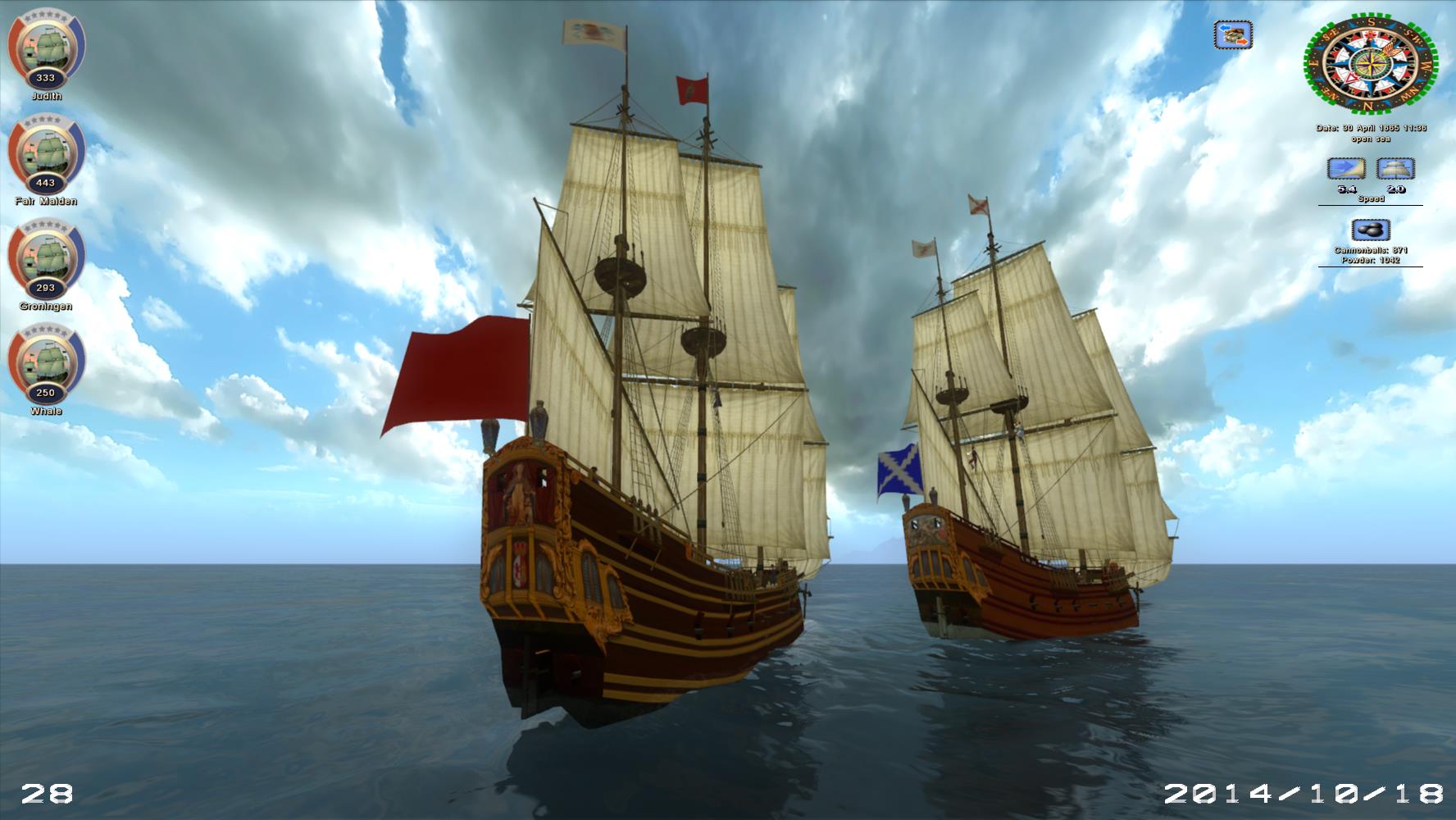
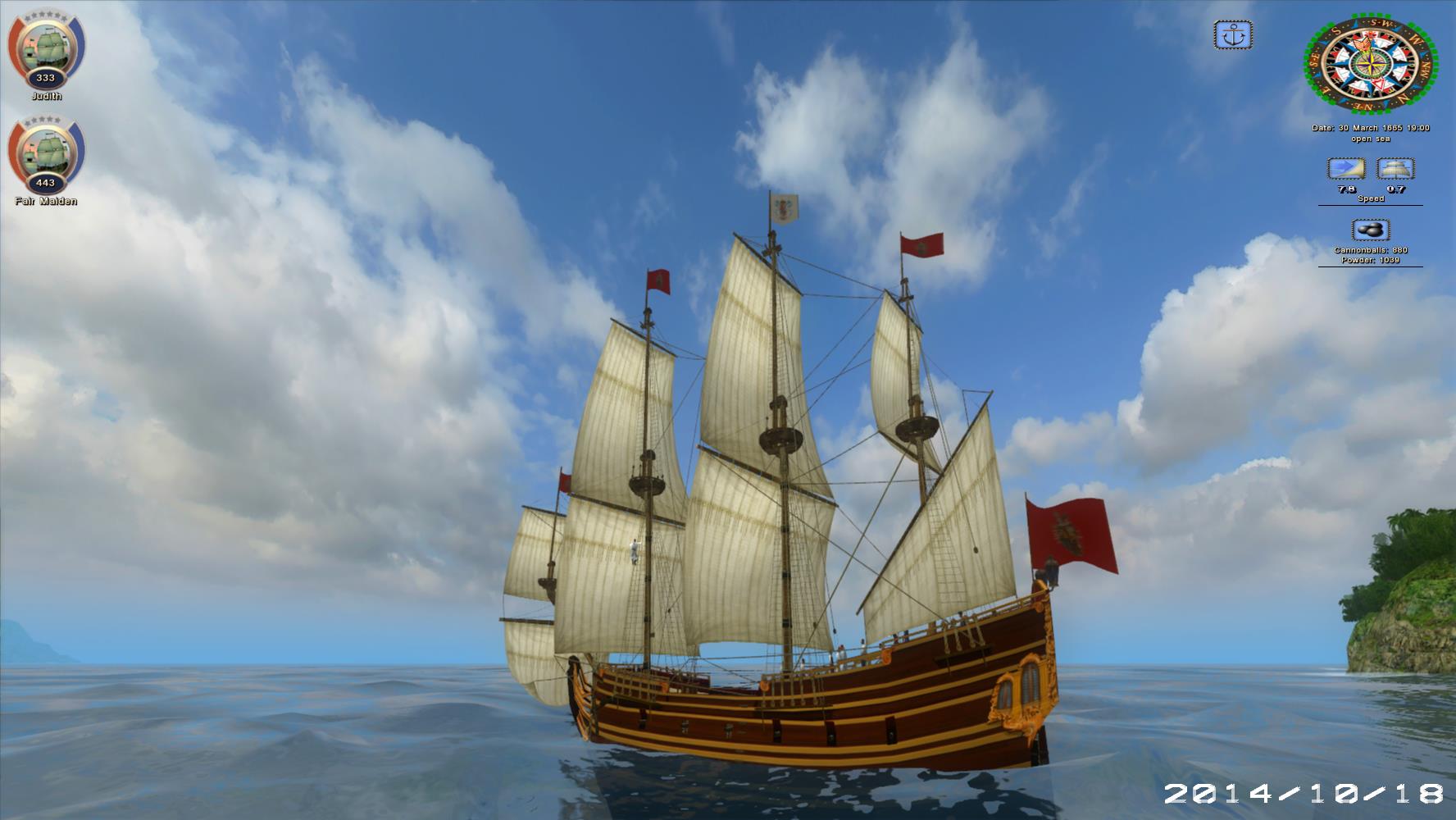
Leave a Reply
You must be logged in to post a comment.